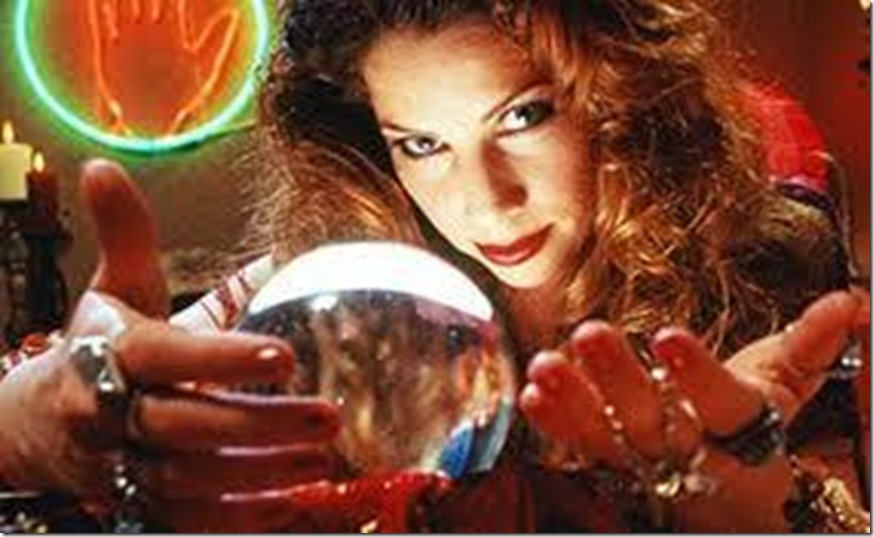still interpreting meanings, check back soon
When Aladdin is introduced initially, he is 18 years old. He never received a formal education, and has only learned by being on the streets of Agrabah. He steals to survive, making him a sort of Robin Hood-type thief. Aladdin was born 18 years prior to the events in the first film. He was born to Cassim and his wife. When Aladdin was only an infant, his father left him and his mother in order to find a better life for his family. When Aladdin was two, his mother was captured by bandits and was presumed dead. Aladdin's parents were too poor to provide clothing for their son. When Aladdin was seven, he had his first encounter with Razoul, the new captain of the Sultan's guard. Aladdin had stolen an apple from a fruit stand.
Wikapedia
Ali Baba and the Forty Thieves, and the Seven Voyages of Sinbad the Sailor, is one of the most famous tales Scheherazade told.
“Miserable dervish!” I shrieked, “so it is true after all! Into what a bottomless pit has my lust after gold plunged me. Ah, now that my eyes are closed they are really opened. I know that all my sufferings are caused by myself alone! But, good brother, you, who are so kind and charitable, and know the secrets of such vast learning, have you nothing that will give me back my sight?
MYSTICAL TALESThe Arabian Nights in resume contain many tales where we can find numerous hidden symbols for the Spiritual wayfarer, not just simple tales of adventures fit for children, but a call to those who have eyes to see.
“Open Sesame” (Arabic إفتح يا سمسم iftaḥ ya simsim ‘open, O sesame’) is a magical phrase in the story of “Ali Baba and the Forty Thieves” in One Thousand and One Nights. It opens the mouth of a cave in which forty thieves have hidden a treasure; “Hemasas Nepo” was the original phrase to re-seal the cave, but in recent stories, it was “Close Sesame.“
Open sesame is the request for the opening of the Higher consciousness within the field of mind. Forty reduces to 4, the fourfold nature in us all.
This secret caves, rich hidden palaces, or enclosures, were inexhaustible wealth abounds, are allegories for darkroom meditation, but like in Ali baba’s tale forty thieves jealously ( God is a jealous god ) ) guarded the cave, ready to kill any intruder, just like the passions of an impure heart are ready to commit mayhem, and guide the person to an unfortunate end. Only those possessing a pure and kind heart can have access.
Surah Yasin 9. And We have put a barrier before them, and a barrier behind them, and We have covered them up, so that they cannot see.
The Prophet ( prophet is a symbol of the mind that is striving to gain mastery over itself ) was ordered to emigrate from Makkah to Madinah ( from the lower root chakra to the seventh crown chakra ) for the purpose of going inside the cave of Thawr where God taught him how to “remember God” (dhikr Allah). It was the first time that the Prophet invoked God in a loud voice. This is a very great Sufi secret indeed.
To emigrate from Makkah to Madinah ( from the root chakra to seventh crown chakra ) was very easy for the Prophet. He only had to say, “In the Name of God, the Merciful, the Compassionate,” and he would have been in Madinah as easily as it had been for him to take sand and throw it at the ignorant people’s eyes preventing them from seeing him as he was leaving his house.
Or he could have ridden on his horse or camel and reached Madinah in ten to fifteen days. Why did he go to that cave? The ‘Cave of Silence’ as it has been called?
Indeed, it is the ‘Cave of Silent Secrets’. Why was the Prophet ordered by God to go to that cave, which is one day’s travel from Makkah, when he had a distance of fifteen days journeying to go?
I have to post the entire text here so that I can translate it.
THE MYSTICAL TALES OF THE 1001 ARABIAN NIGHTS, SYMBOLS OF THE HEART OF SECRETS.
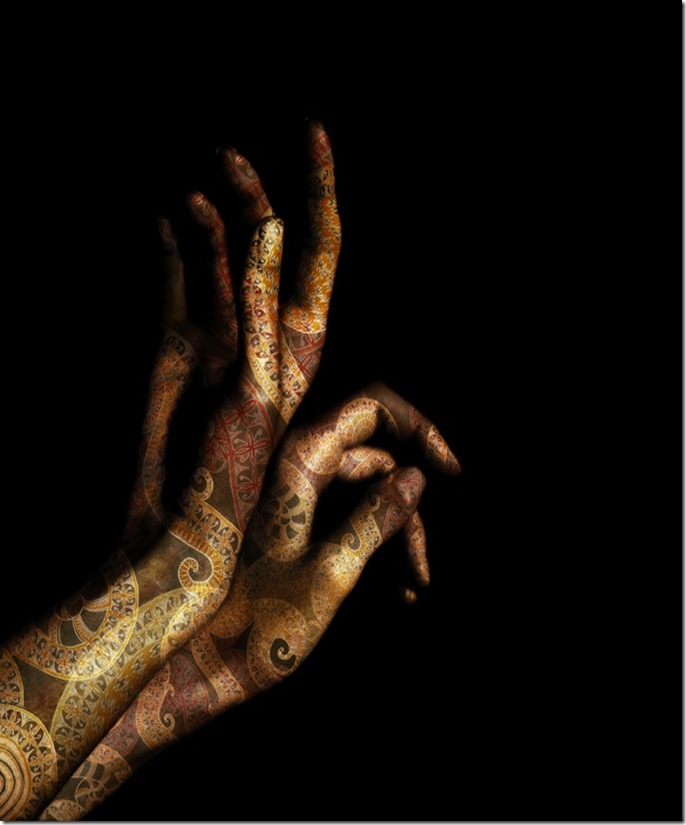
“We lay veils upon their hearts lest they understand it…”
Qur’an (17:46)
Many years ago in my youth when I meet my Spiritual Teacher, I heard someone ask him what were his favorite movies, to my surprise he said:
“I love those movies, about Sinbad the Sailor, Ali Baba, The thief of Bagdad, and that type of movies.”
I was floored, an avid movie fan at the time I couldn’t figure out a man of his Spiritual realization would care for such cheese B movies made on the fifties, and sixties, with second rate actors like Steve Reeves, and other perhaps more memorable, like Douglas Fairbanks earlier and many others, since Hollywood love for the exotic, an adventures has been a cash cow, and every so many years they bring to the screen the tales of the Arabian Nights in a new form, with little, or any artistic relevance, .
At another occasion I heard him express the same opinion, fortunately someone asked him why he loved such movies, his answer made me realize he didn’t care too much for the artistic side of the movies as for the stories themselves, without giving too much explanations he said:
“The spiritual symbolism of those stories is great, like the seven gates, the seven voyages, the magic carpets, lamps, the Genies. etc. And the trials of the soul has to go through in order to find the treasure.”
It was until many years later that I read The Arabian Nights, and I had to agree with my Teacher.
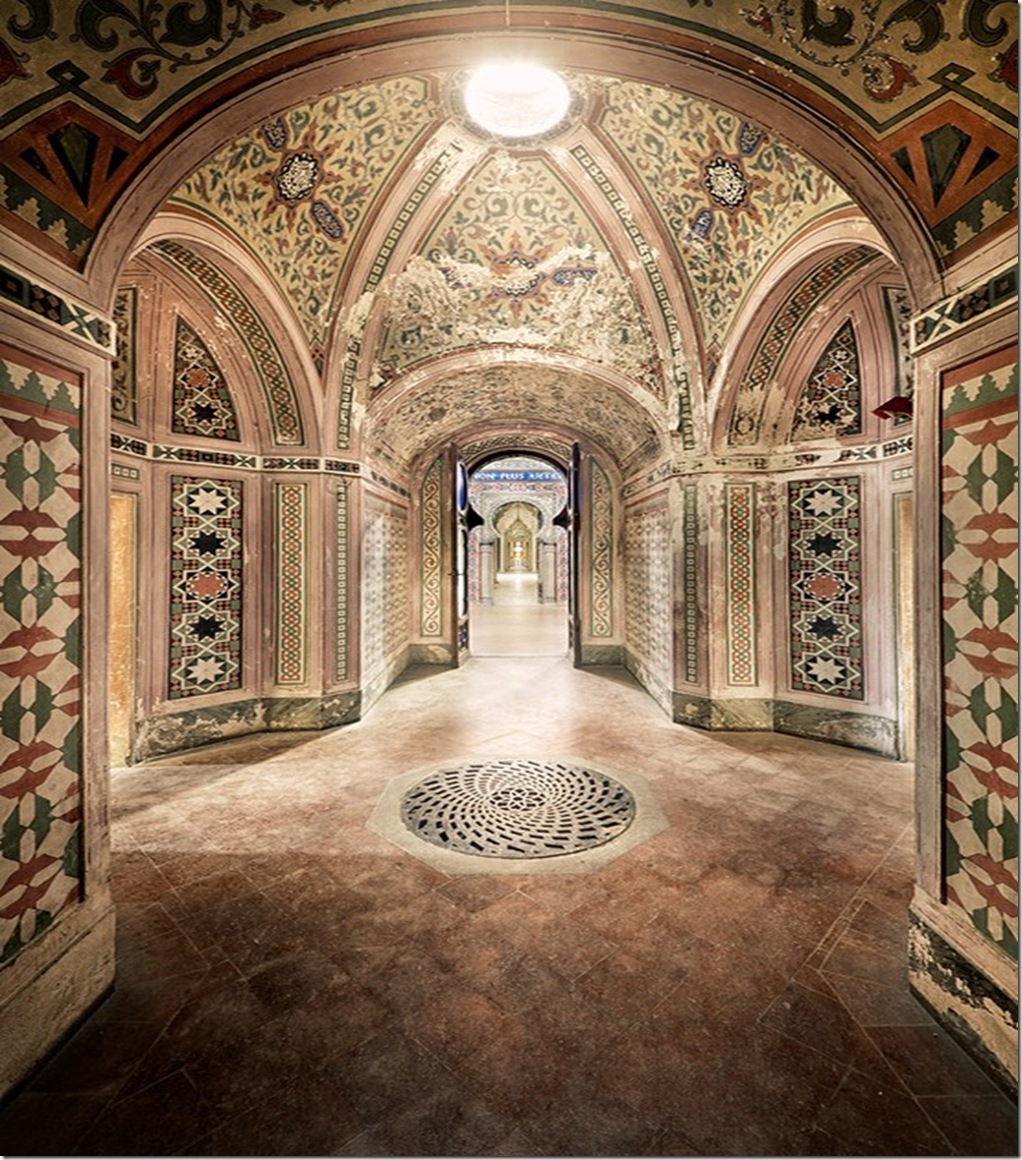
Brief Official History
One Thousand and One Nights (Arabic: كتاب ألف ليلة وليلةKitāb alf laylah wa-laylah) is a collection of West and South Asian stories and folk tales compiled in Arabic during the Islamic Golden Age. It is often known in English as the Arabian Nights, from the first English language edition (1706), which rendered the title as The Arabian Nights’ Entertainment.
The work was collected over many centuries by various authors, translators and scholars across West, Central, South Asia and North Africa. The tales themselves trace their roots back to ancient and medieval Arabic, Persian, Indian, Egyptian and Mesopotamian folklore and literature. In particular, many tales were originally folk stories from the Caliphate era, while others, especially the frame story, are most probably drawn from the Pahlavi Persian work Hazār Afsān (Persian: هزار افسان, lit. A Thousand Tales) which in turn relied partly on Indian elements.
What is common throughout all the editions of the Nights is the initial frame story of the ruler Shahryār (from Persian: شهريار, meaning “king” or “sovereign”) and his wife Scheherazade (from Persian: شهرزاد, possibly meaning “of noble lineage”) and the framing device incorporated throughout the tales themselves. The stories proceed from this original tale; some are framed within other tales, while others begin and end of their own accord. Some editions contain only a few hundred nights, while others include 1,001 or more.
Some of the stories of The Nights, particularly “Aladdin’s Wonderful Lamp”, “Ali Baba and the Forty Thieves” and “The Seven Voyages of Sinbad the Sailor”, while almost certainly genuine Middle Eastern folk tales, were not part of The Nights in Arabic versions, but were added into the collection by Antoine Galland and other European translators. The innovative and rich poetry and poetic speeches, chants, songs, lamentations, hymns, beseeching, praising, pleading, riddles and annotations provided by Scheherazade or her story characters are unique to the Arabic version of the book. Some are as short as one line, while others go for tens of lines.
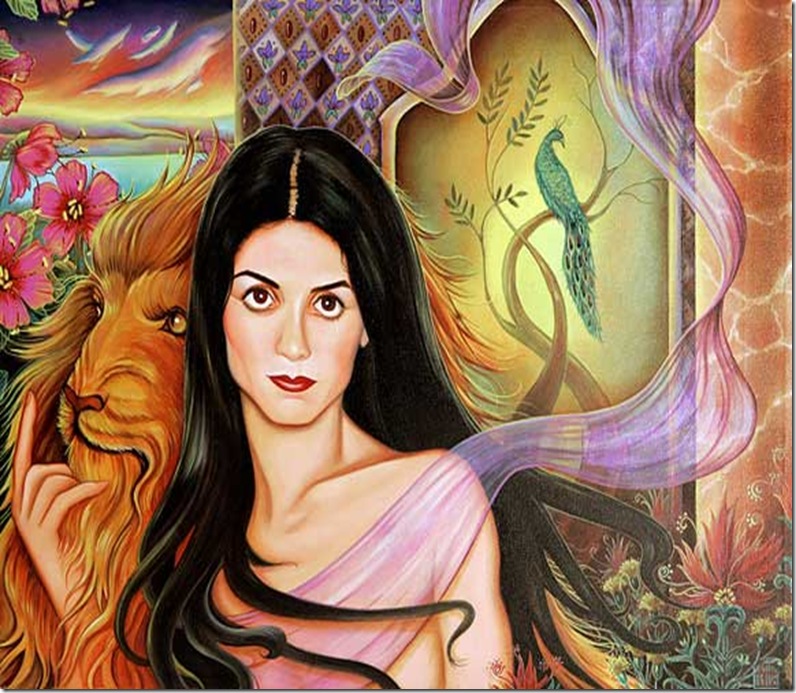
The tales vary widely: they include historical tales, love stories, tragedies, comedies, poems, burlesques and various forms of erotica. Numerous stories depict Jinns, Ghouls, Apes, sorcerers, magicians, and legendary places, which are often intermingled with real people and geography, not always rationally; common protagonists include the historical Abbasid caliph Harun al-Rashid, his Grand Vizier, Jafar al-Barmaki, and his alleged court poet Abu Nuwas, despite the fact that these figures lived some 200 years after the fall of the Sassanid Empire in which the frame tale of Scheherazade is set. Sometimes a character in Scheherazade’s tale will begin telling other characters a story of his own, and that story may have another one told within it, resulting in a richly layered narrative texture.
The history of the Nights is extremely complex and modern scholars have made many attempts to untangle the story of how the collection as it currently exists came about. Robert Irwin summarizes their findings: “In the 1880s and 1890s a lot of work was done on the Nights by the scholar Zotenberg and others, in the course of which a consensus view of the history of the text emerged. Most scholars agreed that the Nights was a composite work and that the earliest tales in it came from India and Persia. At some time, probably in the early 8th century, these tales were translated into Arabic under the title Alf Layla, or ‘The Thousand Nights’.
This collection then formed the basis of The Thousand and One Nights. The original core of stories was quite small. Then, in Iraq in the ninth or tenth century, this original core had Arab stories added to it – among them some tales about the Caliph Harun al-Rashid. Also, perhaps from the tenth century onwards, previously independent sagas and story cycles were added to the compilation. Then, from the thirteenth century onwards, a further layer of stories was added in Syria and Egypt, many of these showing a preoccupation with sex, magic or low life. In the early modern period yet more stories were added to the Egyptian collections so as to swell the bulk of the text sufficiently to bring its length up to the full 1,001 nights of storytelling promised by the book’s title.”
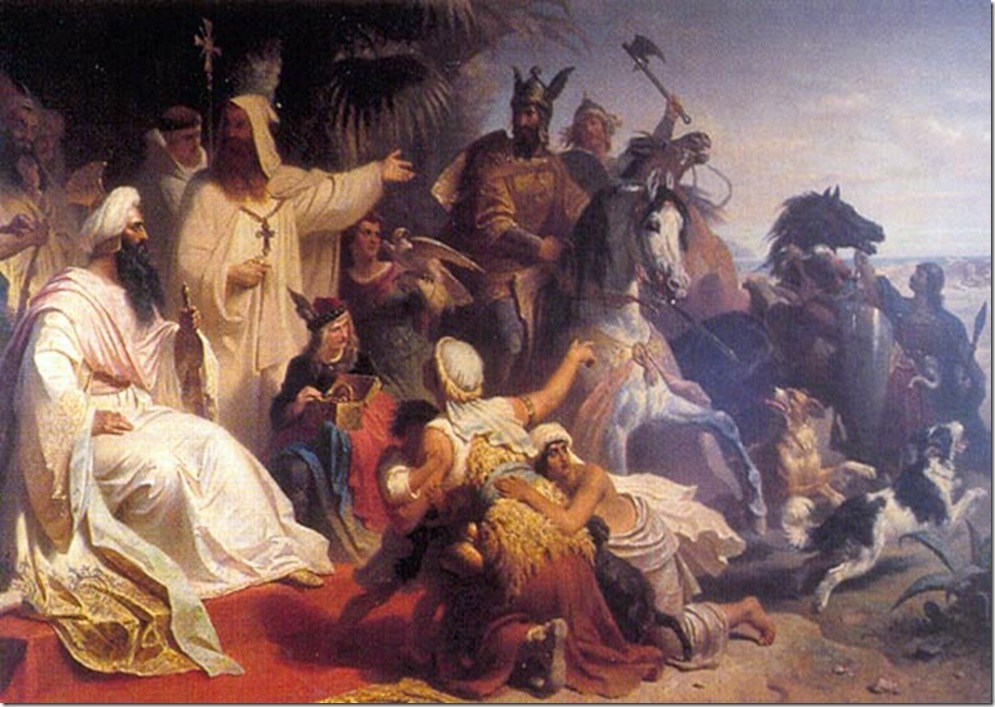
The Mystical aspect of some of the Tales
What western writers and Scholars had put little effort to study, or to show, is the Mystical aspect of some of the tales like Ali Baba and the 40 Thieves, The Seven Voyages of Sinbad, and other tales, of the Arabian Nights, not surprising since early in the History of the Western discovery of Oriental texts, and their translation in to Western languages, specially coming from Islamic countries, there was an emphasis to demystify them, and rendered naked from their true link to Islam, making them profane stories with no connection to their roots in Islam, denying their Mystical origin, and castrating them from their true Symbolic meaning, and the facto making them in a Historical context, children’s stories, material for movie adventures, or at best medieval Oriental legends, of little interest for the contemporary reader! When they posses a rich vein of Mystic knowledge, that goes beyond a moral tale. A few Western readers had glimpsed beyond the common Western trite characterization, and the materialistic, unimaginative, or biased mind of scholars.
The Italian filmmaker Pier Paolo Pasolini observed:
“Every tale in The Thousand and One Nights begins with an ‘appearance of destiny’ which manifests itself through an anomaly, and one anomaly always generates another. So a chain of anomalies is set up. And the more logical, tightly knit, essential this chain is, the more beautiful the tale. By ‘beautiful’ I mean vital, absorbing and exhilarating. The chain of anomalies always tends to lead back to normality. The end of every tale in The One Thousand and One Nights consists of a ‘disappearance’ of destiny, which sinks back to the somnolence of daily life … The protagonist of the stories is in fact destiny itself.”
Foreshadowing
Foreshadowing is the self-fulfilling prophecy, which dates back to the story of Krishna in ancient Sanskrit literature. A variation of this device is the self-fulfilling dream, which dates back to medieval Arabic literature. Several tales in the One Thousand and One Nights use this device to foreshadow what is going to happen, as a special form of literary prolepsis. A notable example is “The Ruined Man who Became Rich Again through a Dream”, in which a man is told in his dream to leave his native city of Baghdad and travel to Cairo, where he will discover the whereabouts of some hidden treasure. The man travels there and experiences misfortune, ending up in jail, where he tells his dream to a police officer.
The officer mocks the idea of foreboding dreams and tells the protagonist that he himself had a dream about a house with a courtyard and fountain in Baghdad where treasure is buried under the fountain. The man recognizes the place as his own house and, after he is released from jail, he returns home and digs up the treasure.
In other words, the foreboding dream not only predicted the future, but the dream was the cause of its prediction coming true. To the aware individual it will be useless to explain the rich Spiritual meaning of this story, to those thick of understanding, is easy to point out that there is no need to look for richness outside of us,True richness lays at the heart of our Being, not outside of us.

Story of the Blind Baba-Abdalla, and Ali Baba
The owner of eighty camels runs in to a dervish, who offer him a treasure for his help, but greed consumed his heart, and ended in misfortune. Here I show the always secret place that is full of precious jewels of all kind and plenty of gold.
“I did what I was bid, and rejoined the dervish, whom I found trying to kindle a fire out of some dry wood. As soon as it was alight, he threw on it a handful of perfumes, and pronounced a few words that I did not understand, and immediately a thick column of smoke rose high into the air. He separated the smoke into two columns, and then I saw a rock, which stood like a pillar between the two mountains, slowly open, and a splendid palace appear within.
But, Commander of the Faithful, the love of gold had taken such possession of my heart, that I could not even stop to examine the riches, but fell upon the first pile of gold within my reach and began to heap it into a sack that I had brought with me.
The dervish likewise set to work, but I soon noticed that he confined himself to collecting precious stones, and I felt I should be wise to follow his example. At length the camels were loaded with as much as they could carry, and nothing remained but to seal up the treasure, and go our ways.
Before, however, this was done, the dervish went up to a great golden vase, beautifully chased, and took from it a small wooden box, which he hid in the bosom of his dress, merely saying that it contained a special kind of ointment. Then he once more kindled the fire, threw on the perfume, and murmured the unknown spell, and the rock closed, and stood whole as before.”
Of course because his bottomless greed and not listening to the warnings, he ended blind not only morally but physically.
“Miserable dervish!” I shrieked, “so it is true after all! Into what a bottomless pit has my lust after gold plunged me. Ah, now that my eyes are closed they are really opened. I know that all my sufferings are caused by myself alone! But, good brother, you, who are so kind and charitable, and know the secrets of such vast learning, have you nothing that will give me back my sight?
“Unhappy man,” replied the dervish, “it is not my fault that this has befallen you, but it is a just chastisement. The blindness of your heart has wrought the blindness of your body. Yes, I have secrets; that you have seen in the short time that we have known each other. But I have none that will give you back your sight. You have proved yourself unworthy of the riches that were given you. Now they have passed into my hands, whence they will flow into the hands of others less greedy and ungrateful than you.”
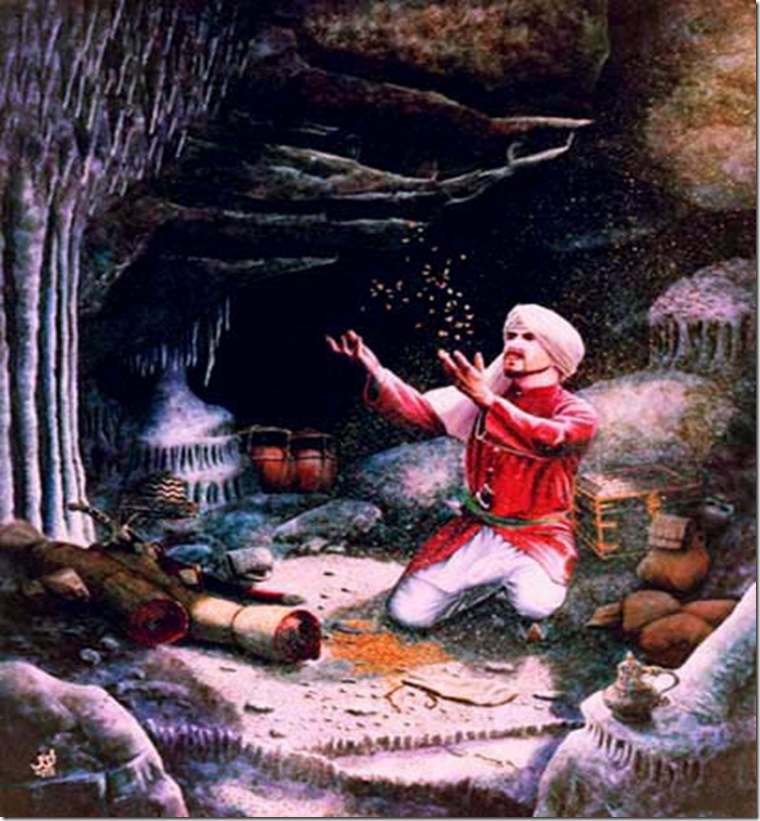
Is this a Spiritual lesson, or what? The usual elements in the story that are so common to the many other stories in the 1001 Arabian Nights, like Ali Baba and the Forty thieves, it is this Secrets Caves, Underground Vaults, Hidden Palaces where it can only by access by special secret words like:
“Open Sesame” (Arabic إفتح يا سمسم iftaḥ ya simsim ‘open, O sesame’) is a magical phrase in the story of “Ali Baba and the Forty Thieves” in One Thousand and One Nights. It opens the mouth of a cave in which forty thieves have hidden a treasure; “Hemasas Nepo” was the original phrase to re-seal the cave, but in recent stories, it was “Close Sesame.“
This secret caves, rich hidden palaces,or enclosures, were inexhaustible wealth abounds, are allegories darkroom meditation, but like in Ali baba’s tale forty thieves jealously guarded the cave, ready to kill any intruder, just like the passions of an impure heart are ready to commit mayhem, and guide the person to an unfortunate end. Only those possessing a pure and kind heart can have access.
Surah Yasin 9. And We have put a barrier before them, and a barrier behind them, and We have covered them up, so that they cannot see.
Thus according to the Holy Qur’an, the hearts are:
• Alive (to guidance)
• Dead (absence of Tawheed)
• Hard (obstinate in disbelief)
• Soft (in remembrance of Allah)
• Pure (free of materialism, empty for Allah)
• Impure (polytheism, disbelief)
• Diseased (un-Godly)
• Sealed (will not receive Truth)
• Pious (God conscious)
• Veiled (from guidance)• Open (to truth)
• Blossom (become enlightened)
• United (with the believers)
• One heart in each person (it contains either Allah or the world)
Ali Baba’s brother whose heart was veiled, and deceased with greed and forgetfulness, is caught in the cave by the forty thieves.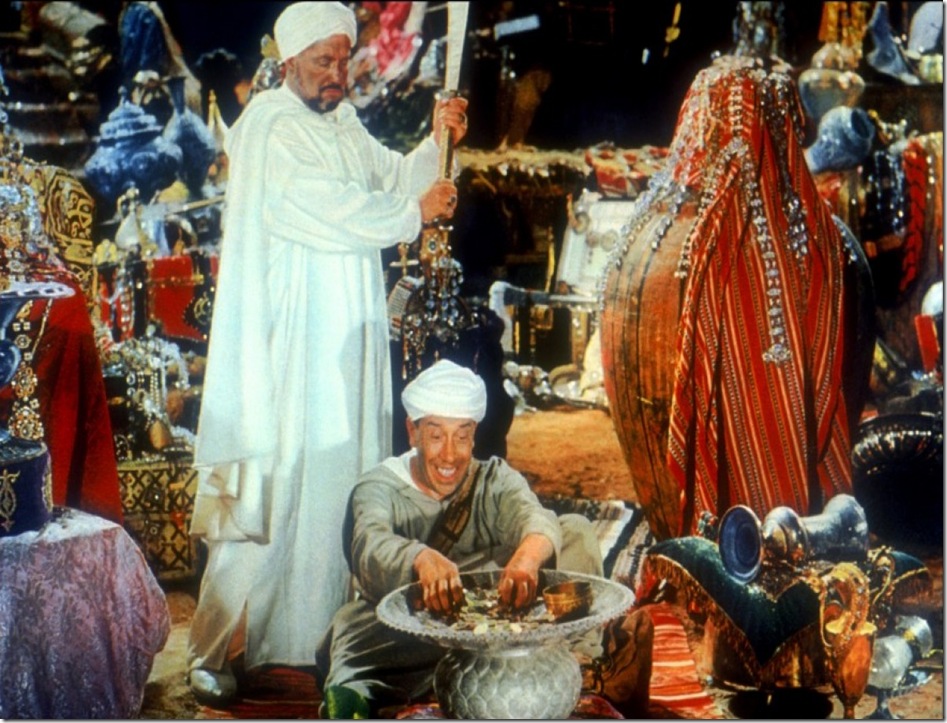
Ali Baba brings the body of his death brother home, where he entrusts Morgiana, a clever slave-girl in Cassim’s household, with the task of making others believe that Cassim has died a natural death. First, Morgiana purchases medicines from an apothecary, telling him that Cassim is gravely ill. Then, she finds an old Tailor known as Baba Mustafa whom she pays, blindfolds, and leads to Cassim’s house. There, overnight, the Tailor stitches the pieces of Cassim’s body back together, so that no one will be suspicious. Ali Baba and his family are able to give Cassim a proper burial without anyone asking awkward questions.
Morgiana keep fooling the thieves with clever ruses so they could not get a hold of Ali Baba, and she finally dispatch the forty thieves, and later the chief of the thieves, that with cunning had found his way in to Ali Baba’s house, and planed to kill him, now why a simple slave girl would take the stage, and be the protagonist of the story, rather than Ali Baba?
The slave girl represent Ali Baba’s soul that is totally at his service, and rejecting the vices that afflict the heart and passions represented by the thieves she triumph over them, and it is rewarded in the end and brought in to the family.
On the necessity of self-control, the Glorious Qur’an says:
وَ أَمَّا مَنْ خافَ مَقامَ رَبِّهِ وَ نَهَى النَّفْسَ عَنِ الْهَوى فَإِنَّ الْجَنَّةَ هِيَ الْمَأْوىAnd as for him who fears to stand in the presence of his Lord and forbids his own soul from its whims and caprices then surely Paradise is the abode. (79:40 & 41)
يا داوُدُ إِنَّا جَعَلْناكَ خَليفَةً فِي الْأَرْضِ فَاحْكُمْ بَيْنَ النَّاسِ بِالْحَقِّ وَ لا تَتَّبِعِ الْهَوى فَيُضِلَّكَ عَنْ سَبيلِ اللَّهِ إِنَّ الَّذينَ يَضِلُّونَ عَنْ سَبيلِ اللَّهِ لَهُمْ عَذابٌ شَديدٌ بِما نَسُوا يَوْمَ الْحِسابِO David! …do not follow the whims of your own soul for they will lead you astray from God’s path. (38:26)
يا أَيُّهَا الَّذينَ آمَنُوا كُونُوا قَوَّامينَ بِالْقِسْطِ شُهَداءَ لِلَّهِ وَ لَوْ عَلى أَنْفُسِكُمْ أَوِ الْوالِدَيْنِ وَ الْأَقْرَبينَ إِنْ يَكُنْ غَنِيًّا أَوْ فَقيراً فَاللَّهُ أَوْلى بِهِما فَلا تَتَّبِعُوا الْهَوى أَنْ تَعْدِلُوا وَ إِنْ تَلْوُوا أَوْ تُعْرِضُوا فَإِنَّ اللَّهَ كانَ بِما تَعْمَلُونَ خَبيراًO you who have faith! Be maintainers of justice and witnesses for the sake of God, even if it should be against yourselves or [your] parents and near relatives, and whether it be [someone] rich or poor, for God has a greater right over them. So do not follow [your] desires, lest you should be unfair, and if you distort [the testimony] or disregard [it], God is indeed well aware of what you do. (4:135)
وَ الشَّمْسِ وَ ضُحاها وَ الْقَمَرِ إِذا تَلاها وَ النَّهارِ إِذا جَلاَّها وَ اللَّيْلِ إِذا يَغْشاها وَ السَّماءِ وَ ما بَناها وَ الْأَرْضِ وَ ما طَحاها وَ نَفْسٍ وَ ما سَوَّاها فَأَلْهَمَها فُجُورَها وَ تَقْواها قَدْ أَفْلَحَ مَنْ زَكَّاها وَ قَدْ خابَ مَنْ دَسَّاهاI swear by the sun and its brilliance and the moon when it follows the sun and the day when it makes manifest the sun (and her beauty) and the night when it covers the sun and the heaven and Him who made it and the earth and Him who extended it and the soul and Him who made it perfect, then He inspired it to understand what is right and wrong for it. He will indeed be successful who purifies it and he will indeed fail whoever pollutes and corrupts it. (91:1-10)
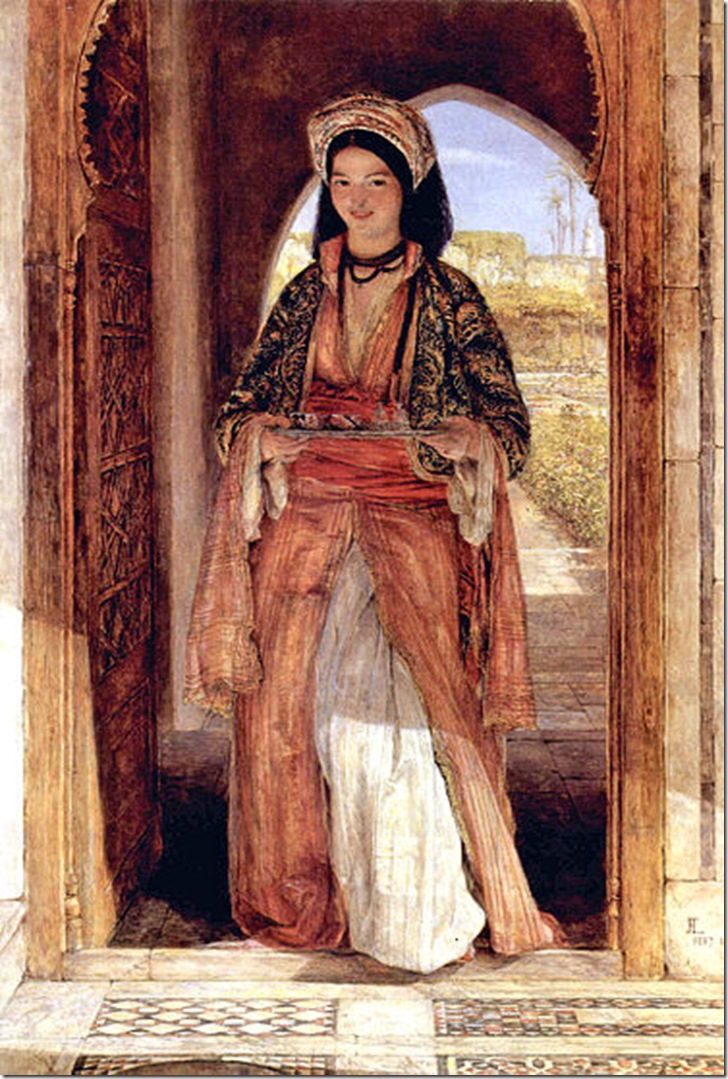
Purification of the soul is a prerequisite for closeness to God. Indeed, the whole point of morality and spirituality is to purify one’s soul. It is only then that the soul starts shining, receiving and reflecting utmost radiation and light from God. If we want to meet God, Who is the Most Pure, then we need to achieve purity. It is impossible to be polluted and then try to go towards God.
The Seven Voyages of Sinbad
While Burton and other Western translators have grouped the Sinbad stories within the tales of Scheherazade in the Arabian Nights, they apparently originated quite independently from that story-cycle and modern translations by Arab scholars often do not include the stories of Sinbador several other of the Arabian Nights that have become familiar to Western audiences. However this is no doubt an Islamic story.
The Persian name Sindbad (“Lord of the Sindh River”) hints at a Persian origin. The oldest texts of the cycle are however in Arabic, and no ancient or medieval Persian version has survived. The story as we have it is specifically set during the rule of the Abbasid Caliphate and particularly highlights the reign of Harun al-Rashid. The name Sindbad indicates the name of the Indus River(Sindhu). The Sindhi Sailors, who became famous due to their skills in navigation, geography and languages may very well have inspired the stories of Sindbad the Sailor. Sindh is actually mentioned in the story of the Third Voyage: (“And thence we fared on to the land of Sind, where also we bought and sold”).
Like the 1001 Nights the Sinbad story-cycle has a frame story, which goes as follows: in the days of Haroun al-Rashid, Caliph of Baghdad, a poor porter (one who carries goods for others in the market and throughout the city) pauses to rest on a bench outside the gate of a rich merchant’s house, where he complains to Allah about the injustice of a world which allows the rich to live in ease while he must toil and yet remain poor. The owner of the house hears, and sends for the porter, and it is found they are both named Sinbad. The rich Sinbad tells the poor Sinbad that he became wealthy, “by Fortune and Fate”, in the course of seven wondrous voyages, which he then proceeds to relate.

It is alleged with some justice that the Seven voyages shares a lot in common with the Odyssey of Homer, the Arabs knew well the Greek antiquity, and no doubt borrowed elements of the Odyssey, since it is also a Symbolic tale of the soul to reach home.
Also the nature of the tales, is repetitive, and Chiasmic in nature, sailors made out to sea were they expect to make a larger fortune of the one they spend on making the trip, they go to unknown regions, were sometimes are shipwrecked by storms and end stranded in a foreign land, or Island, were all kind of vicissitudes are met and deal successfully or that would be the end of it and likely Sinbad would die, but instead, he regains all what he lost, and come back home with more.
Michael Murray writes:
“What is gained by exploration? Knowledge: of market-resources, trading-terrain, of conditions, regions and customs. But also an invaluable network of colleagues and contacts. What is gained is trust, honor and esteem. Wealth is only a metaphor for knowledge: worldly wealth, and spiritual wealth mirror each other in the overall tale.
So what happened to change matters? As you can guess, there is a central voyage where all changes – because, yes, the Seven Voyages of Sinbad, are structured in a ring. Each tale has a repeating pattern of shipwreck, loss, or abandonment; and resolution. This last can come from the restitution of goods/fortune from a previous voyage; or earned honors from the present voyage.Each tale ends as it begins with the merchant safely back home and turning once more to an indulgent lifestyle. Each tale employs a change of circumstances in the middle section – each tale is a complete ring in itself. They all add up to the overall ring of the Seven Voyages.
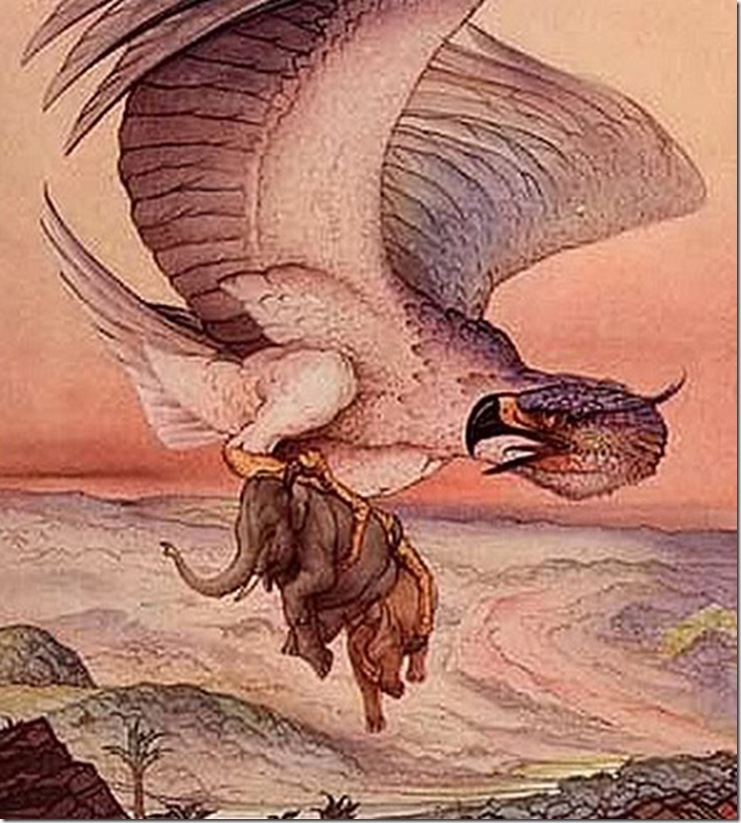
The changeover, in the fourth tale, is very well marked, and prepared for: it is a death experience. Where before, surviving shipwrecks and other catastrophes had been the case, in the fourth tale he is by custom of the land lowered into the grave pit with his dead wife, and a small supply of food, as well as the grave goods.
That he survives is due to his total abasement: he must kill all subsequent burial spouses, and steal their food supplies. He escapes his death-experience by following a carrion-eating animal’s tunnel to a bleak shoreline. He has become that animal almost, crawling on all-fours. He brings out bales of grave goods as loot.
The question being asked here is: what survives when all else is taken away, even one’s life? It is the life of the spirit. The Fourth Voyage sees all shipwrecked, and the survivors drift to an island. Strange wild men take them to their king; he treats them extraordinarily well; Sinbad is wary, however, and soon finds that his fellow men are being fed adulterated food.
They lose their wits, eventually grow corpulent on the fare, and are then eaten, by the king and company. Sinbad grows thinner and thinner. They take no interest in him, and he escapes. On the other side of this vast island he meets a gentle people, who take him in. He provides goods for them and becomes very wealthy by making saddles for their horses, for they have none. As written earlier, he marries, is honored by their king, then undergoes the ordeal of the grave pit. The ring here centers around the subject of the bestiality of living solely in the physical body. He must die in the body and mind in order to be reborn as someone worthy of his life: the man must ride the body, and not vice versa.”
The Seven Voyages of Sinbad ultimately represent the travels of the Soul through the seven spheres of Spiritual Knowledge.
In Islam Sura Al-Fatiha (Arabic :سورة الفاتحة), (Sūratul-Fātihah, “The Opener”) is the first chapter of the Qur’an. Its seven verses are a prayer for Allah’s guidance, and stress His Lordship and Mercy.
Arabic: 1.1 بِسْمِ اللّهِ الرَّحْمـَنِ الرَّحِيم
1:2 الْحَمْدُ للّهِ رَبِّ الْعَالَمِين
1:3 الرَّحمـنِ الرَّحِيم
1:4 مَـالِكِ يَوْمِ الدِّين
1:5 إِيَّاك نَعْبُدُ وإِيَّاكَ نَسْتَعِين
1:6 اهدِنَــــا الصِّرَاطَ المُستَقِيم
1:7 صِرَاطَ الَّذِينَ أَنعَمتَ عَلَيهِمْ غَيرِ المَغضُوبِ عَلَيهِمْ وَلاَ الضَّالِّين
Transliteration:
Al-Fatiha | 7 verses | The Opening | سورة الفاتحة Sura #1 | Makkah
- Bismillāhi r-raḥmāni r-raḥīm
- Al ḥamdu lillāhi rabbi l-ʿālamīn
- Ar raḥmāni r-raḥīm
- Māliki yawmi d-dīn
- Iyyāka naʿbudu wa iyyāka nastaʿīn
- Ihdinā ṣ-ṣirāṭa al-mustaqīm
- Ṣirāṭa al-laḏīna anʿamta ʿalayhim ġayri l-maġḍūbi ʿalayhim walā ḍ-ḍāllīn
Translation: [Quran 1:1].
“In the name of Allah, the Entirely Merciful, the Especially Merciful.
All praise and thanks is for to Allah,[The] Creator, Owner, Sustainer of the Worlds.
The Entirely Merciful, The Especially Merciful.
Owner of the Day of Recompense.
You alone do we worship and You alone we seek for help.
Guide us to the Straight Path.
The path of those whom Your blessings are upon, Not of those who You have cursed nor of those who have gone astray.”
Volumes had been wrote about the profound Symbolism of this first Sura.
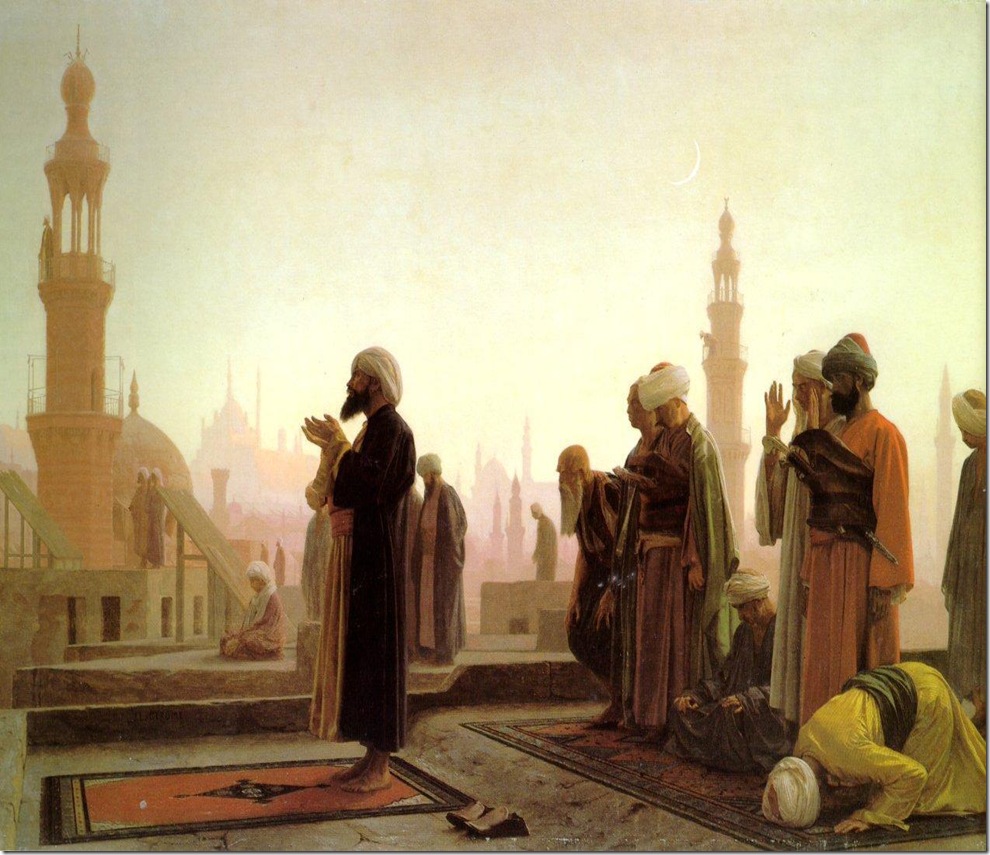
Ṭawāf (طواف) is one of the Islamic rituals of pilgrimage. During the Hajj and Umrah, Muslims are to circumambulate the Kaaba (most sacred site in Islam) seven times, in a counterclockwise direction. The circling is believed to demonstrate the unity of the believers in the worship of the One God, as they move in harmony together around the Kaaba, while supplicating to Allah.
The Zamzam Well was revealed to Hagar, the second wife of Abraham and mother of Ismail. According to Islamic tradition, she was desperately seeking water for her infant son, but she could not find any, as Mecca is located in a hot dry valley with few sources of water.
Muslim traditions say that Hagar ran seven times back and forth in the scorching heat between the two hills of Safa and Marwah, looking for water. Getting thirstier by the second, Ishmael scraped the land with his feet, where suddenly water sprang out. There are other versions of the story involving God sending his Archangel, Gabriel, who kicked the ground with his heel and the water rose.
Stoning of the Devilor stoning of the jamarāt (Arabic: رمي الجمرات) is part of the annual Islamic Hajj pilgrimage to the holy city of Mecca in Saudi Arabia. Muslim pilgrims fling pebbles at three walls, called jamarāt, in the city of Mina just east of Mecca.
When he [Abraham] left Mina and was brought down to (the defile called) al-Aqaba, the Devil appeared to him at Stone-Heap of the Defile. Gabriel said to him: “Pelt him!” so Abraham threw seven stones at him so that he disappeared from him.
Then he appeared to him at the Middle Stone-Heap. Gabriel said to him: “Pelt him!” so he pelted him with seven stones so that he disappeared from him. Then he appeared to him at the Little Stone-Heap. Gabriel said to him: “Pelt him!” so he pelted him with seven stones like the little stones for throwing with a sling. So the Devil withdrew from him.
The Isra and Mi’raj (Arabic:الإسراء والمعراج, al-’Isrā’ wal-Mi‘rāj), are the two parts of a Night Journey that, according to Islamic tradition, the Islamic prophet Muhammad took during a single night around the year 621. It has been described as both a physical and spiritual journey to the Seven Heavens.
This is so rich in Symbology, and Wisdom that this article scope will not do justice to it , and will have to address at another time in the future.
The Sages teach that seven are the attributes of physicality:
-
Height
-
Width
-
Depth
-
Top and bottom (limits height)
-
Front and back (limits width)
-
Left and right (limits depth)
-
The connecting of the other six
The Symbology of the number seven is so extend and so well known it will be necessary to dedicate a book to it, let’s just mention the seven days of the week, the seven colors, the seven notes of the music scale, the seven days of creation, the seven seals of Revelations, the seven seas, the seven Spiritual centers in Man, that the Hindus call Chakras, etc.
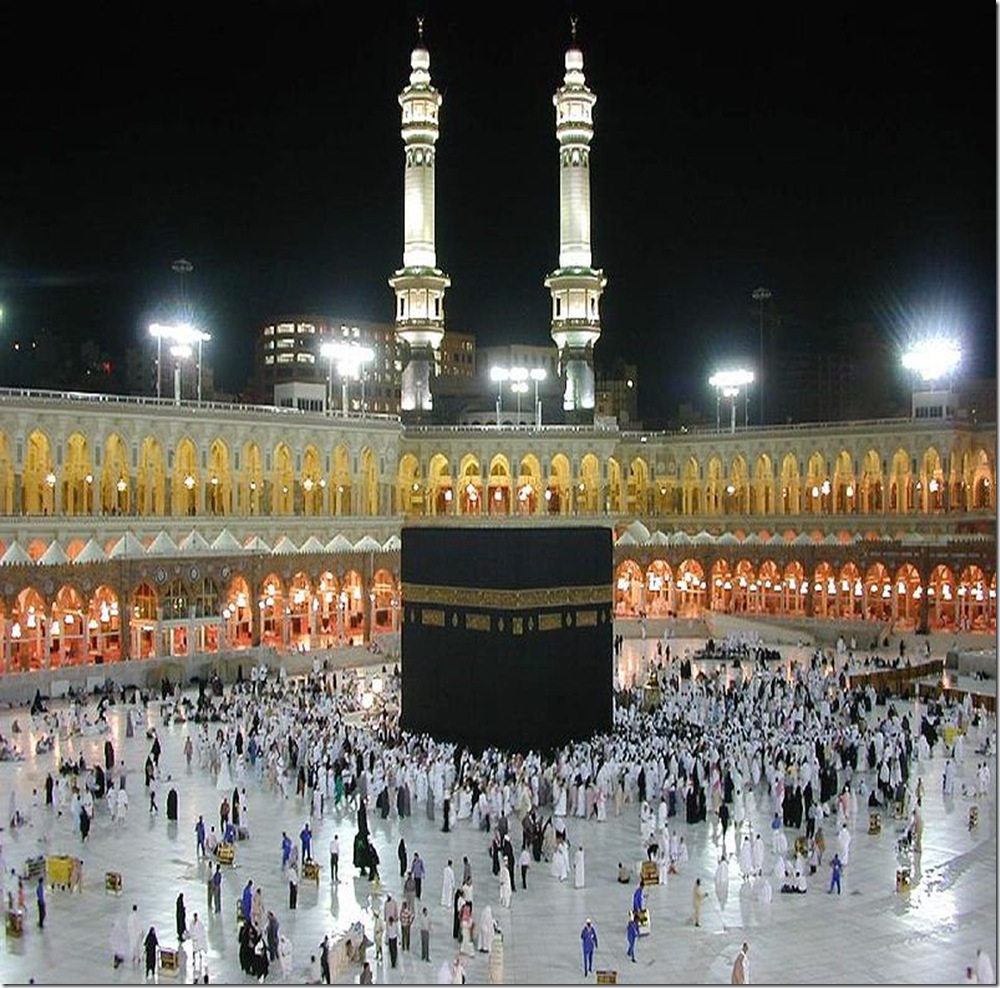
Other common theme is the Genie Invocation Spells or Jinn Invocation formulas Djinns. Like in the story Aladdin or, the wonderful Lamp.
Aladdin
Aladdin is an impoverished young ne’er-do-well in a Chinese town, who is recruited by a sorcerer from the Maghreb, who passes himself off as the brother of Aladdin’s late father Qaseem, convincing Aladdin and his mother of his goodwill by apparently making arrangements to set up the lad as a wealthy merchant. The sorcerer’s real motive is to persuade young Aladdin to retrieve a wonderful oil lamp from a booby-trapped magic cave of wonder.
After the sorcerer attempts to double-cross him, Aladdin finds himself trapped in the cave. Fortunately, Aladdin retains a magic ring lent to him by the sorcerer. When he rubs his hands in despair, he inadvertently rubs the ring, and a jinni, or “genie”, appears, who takes him home to his mother.
Aladdin is still carrying the lamp, and when his mother tries to clean it, a second, far more powerful genie appears, who is bound to do the bidding of the person holding the lamp. With the aid of the genie of the lamp, Aladdin becomes rich and powerful and marries Princess Badroulbadour, the Emperor’s daughter. The genie builds Aladdin a wonderful palace – far more magnificent than that of the Emperor himself.
The sorcerer returns and is able to get his hands on the lamp by tricking Aladdin’s wife, who is unaware of the lamp’s importance, by offering to exchange “new lamps for old”. He orders the genie of the lamp to take the palace to his home in the Maghreb. Fortunately, Aladdin retains the magic ring and is able to summon the lesser genie. Although the genie of the ring cannot directly undo any of the magic of the genie of the lamp, he is able to transport Aladdin to Maghreb, and help him recover his wife and the lamp and defeat the sorcerer.
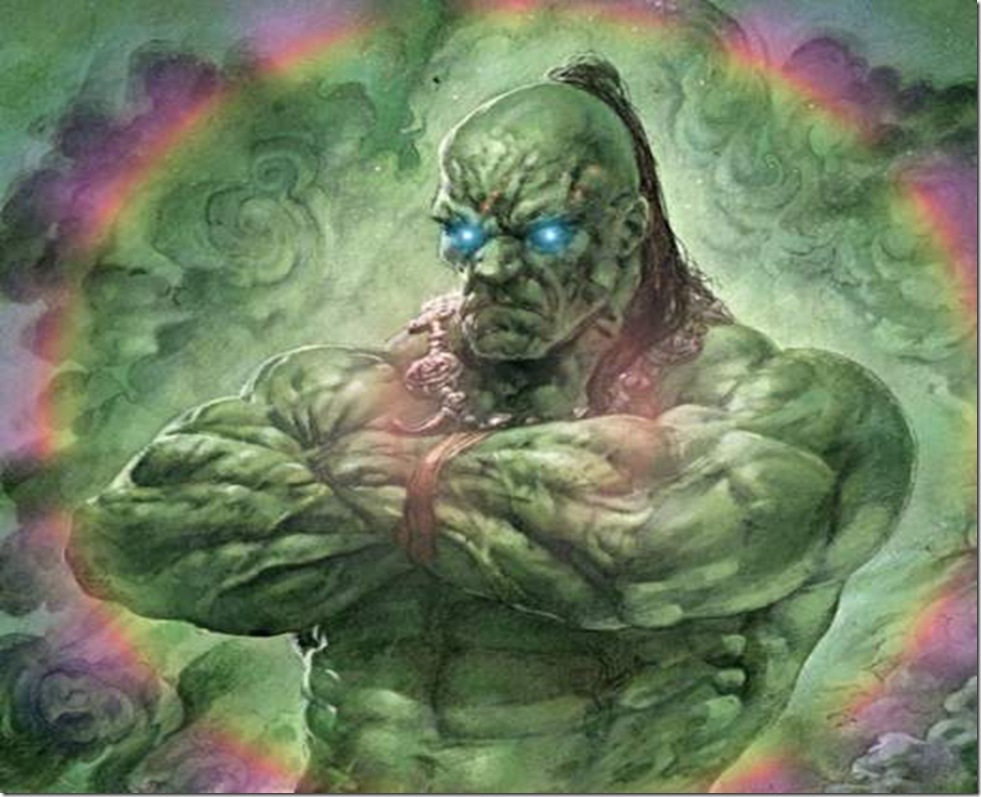
The sorcerer’s more powerful and evil brother tries to destroy Aladdin for killing his brother by disguising himself as an old woman known for her healing powers. Badroulbadour falls for his disguise, and commands the “woman” to stay in her palace in case of any illnesses. Aladdin is warned of this danger by the genie of the lamp and slays the imposter. Everyone lives happily ever after, Aladdin eventually succeeding to his father-in-law’s throne.
Jinns, Genies are also living beings but they are made of fire. Genie or Jinns can be conquered by human beings by special invocations and if the invocation is done properly then after the completion of the Invocation it is possible to conquer the genie of jinns.
But they all are one having the same powers and if this power is conquered by any one that person will be a very powerful human being having any type of power to do any thing and every thing. Looking for Genie Invocation spells or formulas for invocation of genies. Jinn invocation is done to conquer jinns.
Invocation of jinn is possible by jinn spells or genie spells with talismans or charms. Summoning or invocation of genies, jinns etc requires proper concentration and then invocation of genies (jinns) is possible.
Again a simple tale of a humble orphan boy, and his impoverish mother who rise to power defeating an evil sorcerer, with the help of a Magical ring, and a Magical oil lamp were Genies reside, of course there is not such objects in the literal sense, but the fact is that this treasures are hidden in a secret cave, does not take much to discover the cave as a source of richness and treasures with unlimited possibilities, it is no other than the Heart.

The Heart of the Believer is the House of God
“So the Prophet’s migration from Makkah to Madinah was to pass by a cave. According to the life story of the Prophet , that cave was called the cave of Thawr. It is one day’s distance from Makkah. The Prophet stayed there three days. Why did the Prophet stay in that cave? Why was he unable to continue? The unfolding of the secrets occurred in that cave.
The Prophet was ordered to emigrate from Makkah to Madinah for the purpose of going inside the cave of Thawr where God taught him how to “remember God” (dhikr Allah). It was the first time that the Prophet invoked God in a loud voice. This is a very great Sufi secret indeed.
To emigrate from Makkah to Madinah was very easy for the Prophet. He only had to say, “In the Name of God, the Merciful, the Compassionate,” and he would have been in Madinah as easily as it had been for him to take sand and throw it at the ignorant people’s eyes preventing them from seeing him as he was leaving his house.
Or he could
have ridden on his horse or camel and reached Madinah in ten to fifteen
days. Why did he go to that cave? The ‘Cave of Silence’ as it has been
called? Indeed, it is the ‘Cave of Silent Secrets’. Why was the Prophet
ordered by God to go to that cave, which is one day’s travel from
Makkah, when he had a distance of fifteen days journeying to go?

When the Prophet went into that cave, a spider and a dove came and made a house over the door in order that no one would know what was inside. This is common knowledge. As for the secret, look to love. When love for someone is pure, God will never forget that person. “
“My earth and my heaven do not encompass me, but the heart of My servant who has faith does encompass me.”
Hadit Qudsi
There are 5 lata’ifs (subtle points of spiritual Energy), or Maqams (spiritual stations), on
the human heart. These five stations are, in an ascending order:
Qalb (“External Structure of the Heart”)
Sirr (“Secret”)
Sirr as Sirr (“Secret of the Secret”)
Khafa (“Hidden Akha (“Most Hidden”)
Surah Al-Inshirah
94:1أَلَمْ نَشْرَحْ لَكَ صَدْرَكَ
Alam nashrah laka sadraka
Have We not expanded thee thy breast?
94:2وَوَضَعْنَا عَنْكَ وِزْرَكَ
WawadaAAna AAanka wizraka
And removed from thee thy burden
94:3الَّذِي أَنْقَضَ ظَهْرَكَ
Allathee anqada thahraka
The which did gall thy back?
The Arabian Nights in resume contain many tales where we can find numerous hidden symbols for the Spiritual wayfarer, not just simple tales of adventures fit for children, but a call to those who have eyes to see.

[22:46] Did they not roam the earth, then use their minds to understand, and use their ears to hear? Indeed, the real blindness is not the blindness of the eyes, but the blindness of the hearts inside the chests.
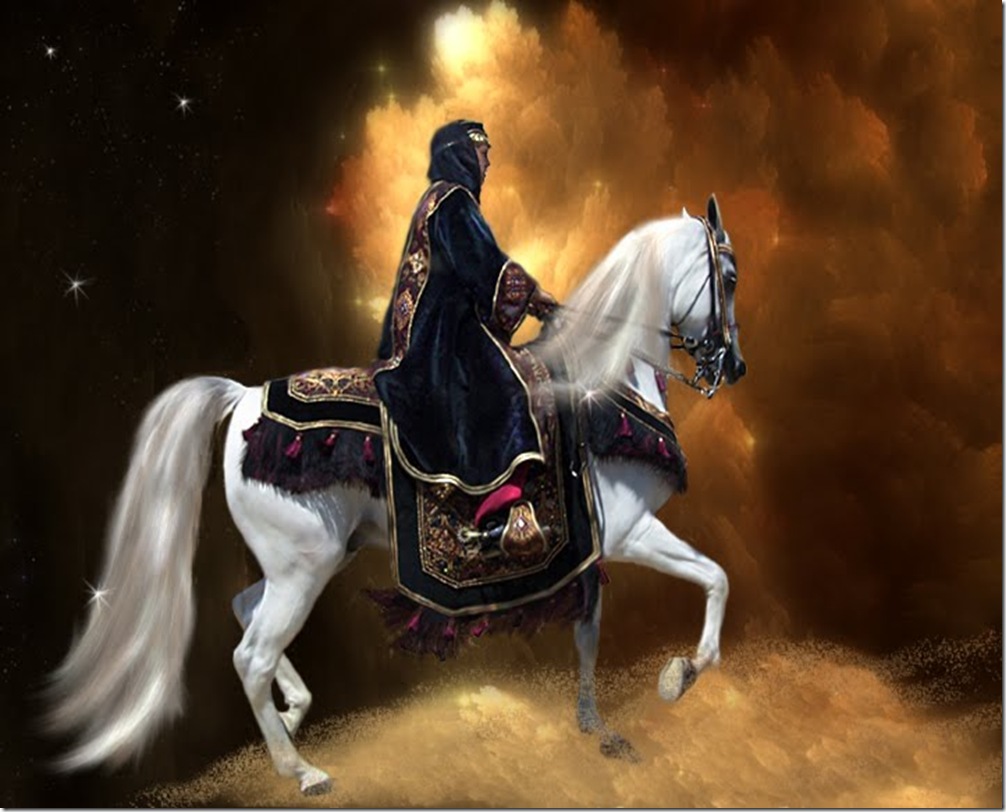
These stories are being reposted for your reading pleasure, the link to each page is below.
Fairy tales are a sub-genre of the artistic and literary genre known as ‘fantasy,’ the latter being a genre in which life—or at least some aspect of life—is depicted in a highly imaginative manner. Now, most fairy tales are not about ‘fairies’ at all but are mythological in nature, and their inner or more esoteric meaning is cloaked in allegory, parable and symbolism.
Sounds like the BIBLE doesn't it, that's because all truths are NOT given directly, but shrouded in a fairy tale or MYTH, in this way the ancients HID the true meaning from the ignorant lower chakra humans who step on higher spiritual knowledge.
Rubbing
the genie refers to spiritual practice of various kinds including
prayer and meditation. So, we either experience—‘suffer’—the
consequences of our actions or we wipe them out by invoking the above
mentioned spiritual principle, sometimes referred to as the ‘law of
love.’ The choice is ours. In the words of the New Thought minister and writer Dr Emmet Fox
(pictured left), it is a case of ‘Christ or Karma.’ (Note. The
reference to ‘Christ’ is a reference, not so much to Jesus, but to what
is known in metaphysics as the ‘Christ principle,’ that is, our innate
‘divine’ potential and spiritual ‘reality.’)
Robert Collier (Secret of the ages) used to explain that the subconscious mind is this Genie. This is an
understanding that our subconscious minds are far more powerful and
active than we think they are. He talks about how calculation that would
even today boggle supercomputers the subconscious mind does instantly
everyday when it calculates what the body needs and where.
We can assign to the subconscious mind a task to be carried out for us. When we assign a task to the subconscious mind it goes to work for us if we "LET" it. Most do not let it and worry about the opposite of what they want happening.
The S.O.S. talks about utilizing our whole brains. This is giving tasks to our right brains to do for us. It is like in the background working all the time for us, most would say subconscious but that is a word that takes the belief of control and power away from you. Subconscious implies that you have no control so it is better to say I give it over to my right brain to handle.
When we need something solved that we haven't an answer for we just give it up to our right brains to handle and forget about it. This is similar to praying to God to handle it for you and forgetting about it.
We can assign to the subconscious mind a task to be carried out for us. When we assign a task to the subconscious mind it goes to work for us if we "LET" it. Most do not let it and worry about the opposite of what they want happening.
The S.O.S. talks about utilizing our whole brains. This is giving tasks to our right brains to do for us. It is like in the background working all the time for us, most would say subconscious but that is a word that takes the belief of control and power away from you. Subconscious implies that you have no control so it is better to say I give it over to my right brain to handle.
When we need something solved that we haven't an answer for we just give it up to our right brains to handle and forget about it. This is similar to praying to God to handle it for you and forgetting about it.
FAIRY TALES AND THEIR INNER MEANINGS By Dr Ian Ellis-Jones Counsellor An Address to The Blavatsky Lodge of The Theosophical Society in Australia Sydney, New South Wales, Australia,
'The Mystery Language and its Keys.’
It’s in volume one. H P Blavatsky points out that there is one universal esoteric or ‘mystery’ language underlying all the sacred traditions of history. HPB writes that ‘all the ancient records were written in a language which was universal and known to all nations alike in days of old, but which is now intelligible only to the few.’ Fairy tales are a sub-genre of the artistic and literary genre known as ‘fantasy,’ the latter being a genre in which life or at least some aspect of life is depicted in an ‘unnatural’ (ugh) and highly imaginative manner.
The problematic word ‘unnatural’ does not mean ‘unrealistic’ or ‘supernatural’ (whatever that means), but, in fantasies, imagination, wonder and fancy all play very important roles. The characters often engage in ‘fantasies,’ that is, visionary fancies and other kinds of mental images including dreams, daydreams and hallucinations.
A ‘fantasy’ ordinarily involves the following elements: first, a quest or journey of some kind, often involving tests, trials and tribulations, with a battle between ‘good’ and ‘evil’; secondly, a fictitious or legendary place in which strange, ‘unnatural’ events occur; thirdly, the presence of strange, ‘unnatural,’ fanciful, even grotesque, characters and capricious forces; and fourthly, lessons in how to live, evolve, and relate to others and a power-not-oneself that is capable of freeing oneself from the bondage of self.
Fairy tales are not just about fantasy. That grand master of modern fairy tales J R R Tolkien wrote that fairy tales have four main uses: escape, consolation, recovery, and fantasy. I have already spoken, albeit briefly, about fantasy. The ideas of escape and consolation are fairly straightforward, but the notion of recovery is a fascinating and most important one. Recovery is, yes, all about regaining what seemingly, and perhaps actually, has been ‘lost.’
I think the notion of recovery will be become quite clear when we start to look at a number of highly familiar and popular fairy tales. Now, most fairy tales are not about 'fairies' at all, although as Theosophist John Algeo has pointed out they are very much about faerie. The latter has two meanings: first, the land of fairies, and second, enchantment.
The second meaning is more applicable. On the subject of fairy tales as a source of enchantment, there’s a wonderful book entitled The Uses of Enchantment: The Meaning and Importance of Fairy Tales by the late Bruno Bettelheim, who was one of the greatest psychoanalysts of the twentieth century. Perhaps the most important thing about fairy tales, apart from the sheer enjoyment that comes from reading or listening to them, or watching them on film, is this fairy tales are mythological in nature, and their inner or more esoteric meaning is cloaked in allegory, parable and symbolism.
Nearly all fairy tales are encoded spiritual and moral lessons (‘road maps’) of great importance just like the parables of Jesus in the New Testament and they almost invariably incorporate more than a few fragments (‘gems’) of Ancient Wisdom, with the spiritual ideas and themes being portrayed in a highly figurative and literary manner.
On the surface, or exterior, they largely present as stories for childrenKinder und Hausmärchen (‘Children’s and Household Tales’), in the words of the Brothers Grimm but their inner or ‘true’ significance is hidden (that is, ‘occult’). If there is one theme or underlying message contained in the great religions of the world it is this---we come from God, we belong to God, we are never truly separate from God, and we are all on our way back to God.
Of course, not all the world’s religions use the word ‘God,’ or express this idea theistically, but that is largely immaterial. The idea is still there. Yes, it is the Ancient Wisdom. Fairy tales graphically depict the Platonic/Neoplatonic and theosophical idea of involution and evolution of the soul, or, in the language of the great American mythographer Joseph Campbell, the 'hero's journey' of self-discovery through trial, tribulation and adversity.
Most Theosophists are familiar with what is sometimes referred to as ‘ancient symbology.’ Then there is what we sometimes refer to as ‘secret’ (or ‘sacred’, or ‘mystery’) language. Most of the sacred scriptures of the world as well as many mythological and literary stories---are written in this language.
I have already referred to and quoted H P Blavatsky on this matter. Now, we can be very grateful to writers such as the New Thought minister Dr Emmet Fox, and the equally eminent Theosophist and Liberal Catholic priest Geoffrey Hodson, for they have helpfully explained that there are certain ‘keys’ which, when properly understood, assist us in our interpretation of sacred or ‘occult’ literature and teachings.
First, many of the recorded events in the story or tale, although seemingly ‘real’ in an objective, material, worldly sense, actually occur in the mind or consciousness of the reader. In other words, the story is about you, and me, and what can and does occur in consciousness. Secondly, each character in the story or tale portrays a state or condition of our character, consciousness, spiritual development or human nature. In other words, it is about our strengths, weaknesses, and potentialities.
Thirdly, each story or tale is a graphic, figurative description of some phase or phases of the evolutionary journey of the human soul toward its ultimate perfection. Fourthly, objects (eg rivers, mountains, valleys, deserts, trees, ladders, staircases, inheritances, giants, men, and women, and so forth) all have their own allegorical or spiritual meanings. Let’s now look at some popular fairy tales. Aladdin and His Wonderful Lamp First, the story of ‘Aladdin and His Wonderful Lamp’ or, more correctly,
‘The Story of Aladdin, or the Wonderful Lamp.’ Here’s an outline of the story, which is very Eastern in nature. Most of you will know that this tale can be found in a wonderful collection of ancient tales entitled Tales from the Arabian Nights or One Thousand and One Nights.
It is said that these tales were written down by the ancient Arabians who had heard them from the ancient Persians, who had heard them from the ancient Hindus in India. Many of these tales have a distinctive, Sufi-like flavor to them. Persians, Tartars, Arabs, and Indians move through these tales as ‘real’ human beings as people of every day just like you and me! It seems that these tales were first written down in Arabic, after having been passed down from generation to generation by nomadic, tribal Arabs.
In the early 18th century a French scholar named Antoine Galland collected a number of these tales and was the first to translate them into a European language. Galland apparently had heard and took down at least some of the tales, of which there was until then no written record, from the lips of a Syrian friend who had heard them told by wandering Arabs.
There is the tale of ‘Ali Baba and the Forty Thieves,’ ‘Sinbad the Sailor,’ ‘The Enchanted Horse,’ and several others including ‘The Story of Aladdin, or the Wonderful Lamp.’ Aladdin is an impoverished young ne'er-do-well in a Chinese town, who is recruited by a sorcerer from the Maghreb.
This sorcerer passes himself off as the brother of Aladdin's late father Qaseem, convincing Aladdin and his mother of his goodwill by apparently making arrangements to set up the lad as a wealthy merchant. The sorcerer's real motive is to persuade young Aladdin to retrieve a wonderful oil lamp from a booby-trapped magic cave of wonder.
After the sorcerer attempts to double-cross him, Aladdin finds himself trapped in the cave. Fortunately, Aladdin retains a magic ring lent to him by the sorcerer as protection. When he rubs his hands in despair, he inadvertently rubs the ring, and a genie appears who takes him home to his mother.
Aladdin is still carrying the lamp, and when his mother tries to clean it, a second, far more powerful genie appears, who is bound to do the bidding of the person holding the lamp. With the aid of the genie of the lamp, Aladdin becomes rich and powerful and marries Princess Badroulbadour, the Emperor's daughter (after magically foiling her marriage to the vizier's son).
The genie builds Aladdin a wonderful palace far more magnificent than that of the Emperor himself. The sorcerer returns and is able to get his hands on the lamp by tricking Aladdin's wife, who is unaware of the lamp's importance, by offering to exchange ‘new lamps for old’. He orders the genie of the lamp to take the palace along with all its contents to his home in the Maghreb.
Fortunately, Aladdin retains the magic ring and is able to summon the lesser genie. Although the genie of the ring cannot directly undo any of the magic of the genie of the lamp, he is able to transport Aladdin to Maghreb, and help him recover his wife and the lamp and defeat the sorcerer.
The sorcerer's more powerful and evil brother tries to destroy Aladdin for killing his brother by disguising himself as an old woman known for her healing powers. Badroulbadour falls for his disguise, and commands the ‘woman’ to stay in her palace in case of any illnesses. Aladdin is warned of this danger by the genie of the lamp and slays the imposter. Everyone lives happily ever after, Aladdin eventually succeeding to his father-in-law's throne.
‘Everyone lives happily ever after.’ That is the proverbial ending of almost all fairy tales. After much turmoil, struggle and strife the human soul and the human spirit are brought into conscious union and return to the Source. Salvation, enlightenment, nirvana. The name ‘Aladdin’ means ‘servant of Allah.’
Aladdin is ‘on the Path,’ so to speak. He is fast becoming an adept, an illuminated one. The burning lamp is the lamp or light of Truth, spiritual intuition, divine knowledge. It is that ‘true Light, which lighteth every man that cometh into the world’ (Jn 1:9), that can never be extinguished. On one interpretation of this tale, Aladdin represents our True Self also known as our Christ Self, or spiritual self that is, the God-Self in us.
When Spirit descends into matter, into flesh, it is like being in a cave. Remember, Aladdin was entombed in the cave, and on the third yes, the third day, he escapes from the cave. The cave is the prison-house of self, bondage to self, bondage to the many false selves that we create and present to the world.
(As I see it, we have literally hundreds and thousands of these false selves these ‘I’s’ and ‘me’s’ that we constantly manufacture in our consciousness from one moment to the next.) The supposed uncle, the sorcerer, is an imposter not at all unlike these false selves that purport to be our True Self, because we mistakenly and foolishly identify with them and take them to be our True Self.
Yes, this supposed uncle symbolically represents our lower, selfish mind, which is not truly related to us, that is, to our spiritual self, although it claims to be. He wants the riches, the treasure, that rightfully belongs to Aladdin. That treasure is not the uncle’s by right of consciousness. That is why he the uncle cannot possess the lamp. It will never be ours, while we live from and according to our false or illusory selves. In the tale there are two genies.
There is the genie of the ring, and there is the genie of the lamp. The first genie can be said to represent the law of karma, the law of cause and effect, the law of reaping what one sows It is a law for mind only, and the Ancient Wisdom makes it unambiguously clear that it is indeed possible to rise above even the ‘Great Law’ of karma. You see, when we use the genie of the ring, we are working to, or toward, principle.
When, however, we use the genie of the lamp, we are working from principle from the law of the Christ, that is, the Law of Love, which is a higher law, being a law of spirit and not just mind. In the tale, the genie of the ring is a lesser genie, being unable to undo any of the magic of the genie of the lamp. In that regard, I am reminded of these words from Albert Einstein:
‘We can’t solve our problems by the same kind of thinking we used when we created them.’ Wise words. Well, collectively the genie represents law both mental and spiritual. Rubbing the genie refers to spiritual practice of various kinds devotion, aspiration, prayer, and meditation. So, we either experience ‘suffer’ the consequences of our actions or we wipe them out by invoking the Law
.
The choice is ours. In the words of Dr Fox, it’s a case of ‘Christ or Karma.’ There are many interpretations of the tale of ‘Aladdin and His Wonderful Lamp.’ Here’s another one a little more mundane, but no less important. Aladdin can be seen to represent our conscious mind. The genie represents our unconscious (subconscious) mind.
The lamp, and the action of rubbing the lamp, refer to the proper actions and working of the mind. We all know that over ninety per cent of our mental activity occurs in the unconscious or subconscious mind. Professor William James wrote, ‘The power to move the world is in the subsconscious mind.’ Indeed. In the tale of Aladdin, the genie says, ‘Your wish is my command.’
Yes, as William James also pointed out, we tend to do whatever is our strongest, or most dominant, desire. Never forget that. Rubbing the lamp sets the dominant conscious thought into action, so as to influence the genie (that is, the unconscious or subconscious mind). So, in this interpretation of the tale, Aladdin’s lamp represents the intelligent utilisation of our thoughts and, perhaps more importantly, our creative imagination. Whatever interpretation we adopt and I am sure there are others as well the important message is this.
We must make the mind our mind the obedient ‘slave’ of our True Self, that is, the real person that each of us is. Let’s now move on to the English fairy tale, ‘Jack and the Beanstalk.’
Jack and the Beanstalk Jack is a young lad living with his widowed mother. Their only means of income is a cow. When this cow stops giving milk one morning, Jack is sent to the market to sell it. On the way to the market he meets an old man who offers to give him ‘magic’ beans in exchange for the cow.
Jack takes the beans but when he arrives home without any money, his mother becomes angry and throws the beans to the ground and sends Jack to bed without supper. As Jack sleeps, the beans grow into a gigantic beanstalk. Jack climbs the beanstalk and arrives in a land high up in the sky where he follows a road to a house, which is the home of a giant.
He enters the house and asks the giant's wife for food. She gives him food, but the giant returns and senses that a human is nearby. However, Jack is hidden by the giant's wife and overhears the giant counting his money. Jack steals a bag of gold coins as he makes his escape down the beanstalk.
Jack repeats his journey up the beanstalk two more times, each time he is helped by the increasingly suspicious wife of the giant and narrowly escapes with one of the giant's treasures. The second time, he steals a hen that lays golden eggs and the third time a magical harp that plays by itself. This time, he is almost caught by the giant who follows him down the beanstalk.
Jack calls his mother for an axe and chops the beanstalk down, killing the giant. The end of the story has Jack and his mother living happily ever after with their new riches. When it comes to stories written in the sacred, secret, or mystery language, trees, ladders, staircases, and the like often symbolise a spiritual journey, as well as the soul’s evolution and progressive development and unfoldment.
In other tales, these ‘uprights’ refer to the spinal cord, the life force, kundalini the ‘serpent fire’ in us. In other words, creative divine life. One other very important thing. In the mystery language, a woman represents the human soul, whereas a man represents the human spirit or the physical body (or both).
Any marriage is a ‘mystical marriage’ or union of the human soul and the human spirit and that is a very good thing. In the tale ‘Jack and the Beanstalk’ Jack’s mother is a widow, thus symbolising a soul that is separated from the divine world. She has an wisdom spiritual or ancient wisdom to pass on to her son Jack. We have in the story a reference, once again, to a ‘stolen inheritance.’ Significantly, it is a guardian angel an enlightened, spiritual thought that conveys to Jack the news of the stolen inheritance.
We are all seeking our stolen inheritance. It is nothing other than our spiritual destiny our ultimate reward. Jack must use both courage and intelligence to ascend the beanstalk, the latter coming into existence from, yes, the ‘magic beans,’ the latter symbolising the power of creative thought and imagination, or our potential for spiritual growth and development.
The creative imagination bridges the ‘gap’ between the conscious and unconscious minds (or worlds). We have the archetypal journey, or Path the Quest to recover one’s ‘lost’ or unrealised potential. The journey is not an easy one, and there are many dangers and threats, but we will ultimately triumph no matter how long the journey takes. The giant symbolically represents our ego-self, or false selves, that threaten the divine innocence and spiritual development if the human soul and spirit.
In a more mundane sense, the giant also represents all those difficulties and adversaries we are called upon to face, and conquer, in our daily life. The tale of ‘Jack and the Beanstalk’ is very much a ‘coming of age’ story. It is the ‘hero’s journey,’ in the language of Joseph Campbell. Each one of us is Jack and, yes, we can also be the giant at times too! Jack brings a spiritual treasure to earth the hen which lays the golden egg.
Obvious symbolism, there. An ‘egg’ symbolises a new beginning, new life, resurrection, a new stage of evolution, and the like. ‘Gold,’ of course, represents spiritual wisdom, and divine life. On his second visit Jack brings back bags of silver and gold that is, even more spiritual wisdom.
On his third visit Jack takes a harp, the latter symbolising the music of the spheres, or the knowledge of cosmic harmony. The defeating forces are destroyed or overcome and Jack and his mother live happily ever after with their new riches. The ‘message’ is simple, but not easy we, too, must ‘climb’ into the sky in order to achieve a ‘higher’ existence.
Now, the wonderful fairy tale, ‘The Sleeping Beauty.’ The Sleeping Beauty A king and a queen have been trying to have a child for years. Finally, a frog prophesies a birth. When the child finally arrives, they call her Aurora. A great holiday is proclaimed to celebrate Aurora’s birth.
Visitors come from far and wide, including three good fairies. One of the most distinguished guests is another king from a neighboring kingdom, who brings along his son Prince Philip. (No, not that one. He’s not that old.) Both kings realize that their dream of a united kingdom can now come true.
The three good fairies begin bestowing their gifts upon Aurora. Aurora receives the gift of beauty, and gift of song, but before the last gift is bestowed, a wicked fairy interrupts. This wicked fairy is upset that she wasn’t invited to the party, so she casts a spell on the day of Aurora’s 16th birthday, to the effect that Aurora will prick her finger on the spindle of a spinning wheel and die.
The third good fairy hasn’t bestowed her gift yet, and she is s horrified at the spell the wicked fairy cast. The good fairy isn’t strong enough to undo the spell, but she is able to dilute it a bit, such that instead of death Aurora will instead fall asleep until her true love comes along to undo the spell with a kiss.
As a precaution, all spinning wheels are removed from the kingdom, and Aurora lives in hiding as a peasant with the good fairies for protection. Aurora grows up, meets Prince Philip, and falls in love with him. On the night of Aurora’s 16th birthday, Aurora, Prince Philip, and the good fairies all go back to the castle to live. But the evil fairy sneaks into the castle and pricks Aurora’s finger with a needle, causing her to fall asleep.
With the help of the good fairies, Prince Philip, after a heroic, difficult, and dangerous journey, reaches Aurora, then kisses her, and she awakes and, yes, they all live happily ever after. Well, this is a story of ‘paradise regained’ a very familiar theme in fairy tales, indeed in almost all sacred or secret literature. We have the involution of the human soul, with its incarnation from the starry regions of space-time and the cosmos.
Significantly, it is a ‘frog’ that heralds and prophesies the birth of Aurora, a frog being the ancient occult symbol of metamorphosis. The princess is called Aurora, which means ‘dawn’ or ‘enlightenment.’ If you are familiar with Roman mythology Aurora is the goddess of the Dawn.
She renews herself each morning and flies across the sky, announcing the arrival of the sun. Much symbolism there! There is the curse from the wicked fairy, representing all those trials, setbacks and negative forces with which we have to grapple and which we have to overcome.
Once again, we have the Path or Quest. There’s the staircase that Aurora ascends all referring to the spiritual unfoldment of the human soul. The ‘spinning’ refers largely to intellectual development, the ‘spinning’ of one’s thoughts. Then we have the Prince, who must fight his way, first through overgrown thickets of tall trees and sharp brambles, such that only the very tops of the castle’s towers could be seen, and then a fearsome dragon (or, in some versions of the story, various ferocious dogs or other animals).
Yes, the human spirit, represented by the Prince, must fight its way through evil, ungodly and false beliefs. Some commentators have written that we also have here an allusion to the spirit evolving and successively passing through the various kingdoms (plant, animal, etc) in its divine unfoldment. Ultimately, there is the ‘kiss’ that is, the connection and conjunction between truth and love, the union of the human soul and the human spirit with the Divine. Aurora is nothing other than the soul of the Prince, that was sleeping ‘dormant’ in the illusion of the material world or realm.
Ultimately, the Prince is able to ‘spouse’ his enlightened soul and live happily ever after! And now, the fairy tale, ‘Hansel and Gretel.’ Hansel and Gretel Near a forest a woodcutter lives with his wife and his two children, Hansel and Gretel. The children’s mother has died, the woodcutter’s wife being their stepmother.
They are all very poor- indeed, they were starving, so the two children go out in search of food. Actually, it is the stepmother who suggests that they take the two children out into the forest and lose them. Hansel, the boy, overhears the plan, and collects pebbles, so that he can lay a trail to find his way back. He is successful in so doing.
For the second ‘trip’ the two children take with them one slice of bread along, which they use to mark a path back to their home by leaving crumbs along the way, but the crumbs are eaten by the birds, with the result that the two children find themselves lost in the forest. After a while, they come upon a little house made of gingerbread as a result of the assistance of a white bird who guides the children to the house. (Some wonderful symbolism, there!) Hansel breaks off a piece to eat.
Suddenly, the door flies open and an old woman (‘witch’) comes out and invites them in. She feeds them mountains of pancakes and fruit, and then tucks them into bed to sleep. (Note that word‘sleep.’) What Hansel and Gretel don’t realise is the old woman is fattening them up so she can use them in her favorite dish roasted child.’ Now the two children are prisoners Hansel is put into a stable and the old woman keeps feeding them.
However, when she asks Hansel to put his finger through the bars of the stable to see how fat he is getting, Hansel holds out a piece of dry bone instead. Finally, the children escape and push the old woman into the oven. The house dissolves into pearls and precious stones. (Again, wonderful symbolism, there.) The two children fill their pockets with jewels and food and use the trail of bread crumbs to find their way back home.
They come to a great expanse of water and a white duck carries them over it. (Again, wonderful symbolism, there.) Eventually, on the other side, they recognize their surroundings and return rich to their father’s house. Their father welcomes them home, and informs them that their stepmother has died in the meantime.
(Wonderful! Note, some commentators suggest that the stepmother and the witch are at least metaphorically one-and-the-same person, because the stepmother dies when the children have killed the witch. Maybe.) They all live happily ever after. Well, what a great story of involution and evolution!
The woodcutter’s house is the spiritual or divine world from which we all come, and to which we all ultimately return. The presence in the story of the stepmother notice how in fairy tales these stepmothers are never nice indicates, symbolically, that we have here a material existence into which the human soul (Gretel) and the human spirit (Hansel) have descended.
We have the descent into a physical body, and later the ascent again to the spiritual or divine realm. We see that so often in fairy tales as well as other secret or sacred literature. We have a white bird---a clear sign of divine guidance (cf the Holy Spirit).
The gingerbread house looks so lovely, you want to eat it. The gingerbread house is like the land of Oz (cf The Wonderful Wizard of Oz), that is, that strange, colourful, wonderful, yet also frightening, world in which we now find ourselves, but it is not the ‘real’ world. It is not our ‘true’ home. Anyway, soul and spirit enter the physical body the gingerbread house but, like us, experience it as a veritable prison-house in which bad things can and do happen.
(Isn’t that life?) Yes, we are in slavery, in bondage, and largely to our false selves which we mistakenly take to be the ‘real’ person each of us is. The old woman, or witch, symbolically represents all those negative, retarding forces that seek to overwhelm, indeed destroy, the human spirit (Hansel). Notice the symbol of the dry bone, which represents all those negative forces that are blind to our true spirit. I think the dry bone especially symbolizes dry, intellectuality, that is forever incapable of discerning or knowing spiritual truths.
The fire, and its lighting, symbolically represents some special event or impulse in which the soul awakens and finds freedom. Spiritual riches precious stones and jewels are ours, but first we must cross the Great Water (that is, death). Soul and spirit are carried across the water, and on the far side there is home. Now, the (originally French) fairy tale, ‘Little Red Riding Hood,’ which is also known as ‘Little Red Cap’ or simply ‘Red Riding Hood.’ Little Red Riding Hood This tale, as you all would know, concerns a girl called Little Red Riding Hood.
The girl walks through the woods to deliver food to her sickly grandmother (grape juice and banana bread, or wine and cake depending on the translation). In the Brothers Grimms' version at least, she had the order from her mother to stay strictly on the path. A mean wolf wants to eat the girl, and the food in the basket. He secretly stalks her behind trees and bushes and shrubs and patches of little grass and patches of tall grass.
He approaches Little Red Riding Hood and she naïvely tells him where she is going. He suggests the girl pick some flowers, which she does. In the meantime, he goes to the grandmother's house and gains entry by pretending to be the girl. He swallows the grandmother whole, (in some stories, he locks her in the closet), and waits for the girl, disguised as the grandmother.
When the girl arrives, she notices that her grandmother looks very strange. Little Red Riding Hood then says, ‘What a deep voice you have,’ (‘The better to greet you with’), ‘Goodness, what big eyes you have,’ (‘The better to see you with’), ‘And what big hands you have!’ (‘The better to hug/grab you with’), and lastly, ‘What a big mouth you have,’ (‘The better to eat you with!’) at which point the wolf jumps out of bed, and swallows her up too. Then he falls fast asleep.
A lumberjack (with the Brothers Grimm, and always in German tradition, a hunter), however, comes to the rescue and with his axe cuts open the wolf, who had fallen asleep. Little Red Riding Hood and her grandmother emerge unharmed. They fill the wolf's body with heavy stones. The wolf awakens and tries to flee, but the stones cause him to collapse and die.
(Sanitised versions of the story have the grandmother shut in the closet instead of eaten, and some have Little Red Riding Hood saved by the lumberjack as the wolf advances on her, rather than after she is eaten.) In any event, Little Red Riding Hood gives the cake and the wine to her grandmother, who recovers. Little Red Riding Hood resolves never to stray from the forest path again.
Well, what are we to make of all this? For starters, the little girl, that is, Little Red Riding Hood, represents the innocent ego-conscious soul. The sickly grandmother represents old forces and the Ancient Wisdom which, sadly, have seen better days. Indeed, they are fading. (However, as we all know, the Ancient Wisdom never disappears. Never!)
Little Red Riding Hood is the human soul that seeks wisdom and enlightenment. She is the bearer of cake and wine (cf the sacred symbolism of bread and wine, representative of the indwelling divine life or Christ Self). The wolf represents the retarding forces of materialism and physicality, as well as the attractions of the sense world. The wolf swallows up Little Red Riding Hood (cf Jonah in the belly of the ‘whale’) just like we lose ourselves in the attractions of the senses and physical existence.
(There is also the symbolism of the human soul Little Red Riding Hood being trapped, or imprisoned, in flesh and matter. Involution of the soul, again a time of trial but also progress.) Like the giant in ‘Jack and the Beanstalk,’ and the sorcerer uncle and cave in ‘Aladdin and His Wonderful Lamp,’ the wolf is a powerful, graphic symbol of our many false selves.
Ultimately, Little Red Riding Hood is ‘saved.’ So is her grandmother, who is refreshed wait for it by the cake and wine. (Again, obvious symbolism there.) Little Red Riding Hood has discovered a wonderful spiritual truth, which she intends never to forget. Yes, she wandered from the Path, experienced the meaningless distractions of the material world, but now she has been resurrected into newness of life.
She knows the Path, and she intends to stay on it. What a wonderful object lesson this fairy tale is for all of us! Let’s turn now to the enchanting fairy tale, ‘Cinderella.’ Cinderella There’s a widower who remarries. (Again, we have this common element in fairy tales---namely, a widower and his not-so-nice second wife.) Now, the man’s second wife is ill-natured, indeed cruel, and she has two daughters who are just as unpleasant as her.
The man has, however, a beautiful, gentle daughter of his own, but she soon becomes the servant of her evil stepmother and stepsisters. They make her do all the chores around the house. The beautiful daughter is named Cinderella, after the cinders (or ashes) she sweeps out of the fireplace. (The word ‘Cinderella’ means ‘living among ashes.’
Not a bad description for our earthly lives.) Anyway, Cinderella misses her mother greatly, and each day even in winter Cinderella visits her late mother’s grave. One day, the father travels abroad and asks his daughters what presents he should bring back for them. Not surprisingly, the two un-nice stepdaughters ask for beautiful clothes and jewels respectively.
(Obvious symbolism there isn’t that the modern Western world, whose real religion is consumerism?) Cinderella bless her asks for the twig which brushes his head when he returns home. (In due course, Cinderella plants this hazel twig on her mother’s grave, which she proceeds to water with her tears. It grows into a beautiful tree, and there is this little white bird which comes and throws down whatever Cinderella asks for. (Beautiful!)
Now, there is a king, and he needs to find a bride for his prince, so he throws a huge ball. The evil stepmother and stepsisters are invited, but Cinderella is only allowed to go one condition her stepmother orders her to separate lentils and ashes which have been mixed in a dish together, within an hour.
Cinderella manages to successfully complete this seemingly impossible task, with the help of some birds (again, note the symbolism). The condition is repeated, this time with two dishes of lentils. Again, the birds help. The evil stepmother still says ‘no’ to Cinderella’s attending the ball.
After the others leave for the ball, Cinderella’s fairy godmother appears and changes her dirty rags into a beautiful gown with glass slippers. (In one familiar version of the story, we have Cinderella going to the tree on her mother’s grave, and asking for gold and silver garments (symbolically, spiritual riches or wisdom).
In some versions of the tale, the fairy godmother changes a pumpkin into a coach and some mice into footmen. Before Cinderella leaves, the fairy godmother warns her to be home before midnight, because the spell would only last till then. Cinderella is a big hit at the ball. The prince falls in love with her and asks her name. Just then the clock strikes midnight, and Cinderella runs away. She is in such a hurry that she loses one of her glass slippers.
It is the only clue the prince has to find his true love. The prince goes to every home in the kingdom and has every single young girl try on the slipper to see if it fits. The evil stepsisters can’t fit the slipper, but Cinderella can. The prince marries her and, guess what, they all live happily ever after. Once again, the widower’s first wife Cinderella’s mother symbolically represents the loss of Ancient Wisdom.
(As I’ve already said, the Ancient Wisdom is never truly lost but sometimes that appears to be the case. At least, we often lead our lives as if there were no such thing!) Cinderella’s thrice-daily visits to her mother’s grave symbolically represent that soul which is truly on the Path the soul that is very much spiritually alive, and ever-open to the influx of the spiritual truths embodied in the Ancient Wisdom.
Perhaps there is also here the idea that the dead can continue to influence the living. Once again, the figures of the stepmother and the stepsisters represent those negative, retarding forces that we all have to battle and overcome those forced that would seek to break off all connection with the indwelling divine life. And what about the symbol of the twig which brushes the father’s head?
Well, that appears to be a reference to the divine life, or life force, which comes from above hence the reference to brushing’ the father’s head. At any rate, this is no dead power. No, it stimulates new life, and so we have the beautiful tree that the twig turns into.
The little white bird note, in the sacred or secret language birds ordinarily represent spiritual, ethereal thoughts and blessings (unless they are ugly, nasty birds) represents those blessings which come to us from the spiritual world, at least when they are sought prayerfully and mindfully.
(Note that Cinderella visits her mother’s grave thrice daily, and waters the twig with her tears, the latter symbolic of devotion and spiritual adoration and affection.) And, just like the other stories, it is made unambiguously clear that the human soul, if it is to grow and prosper, must undergo trials and tribulations of various kinds.
Note, in that regard, the task of separating lentils and ashes. Like Cinderella, we too must learn to differentiate between the essential and the inessential. In order to be able to do that successfully, we need the gift of spiritual discernment. In time, the soul is purified. Then we have this king, who wants to find a bride for his prince. Spiritual forces are at work here. The presence of the birds also makes that clear.
The element of the ‘glass slipper’ is quite important. It needs to fit. The true ego or human spirit seeks to unite with the purified soul and it has to be a perfect fit! Yes, in the end our prince marries Cinderella and they all live happily ever after. And, now, the beloved German fairy tale, ‘Snow White and the Seven Dwarfs.’
Snow White and the Seven Dwarfs At the beginning of the story, a queen sits sewing at an open window during a winter snowfall when she pricks her finger with her needle, causing three drops of blood fall onto the snow on the ebony window frame. Admiring the beauty of the resulting colour combination, she says to herself: ‘Oh, how I wish that I had a daughter that is as white as snow, lips as red as blood, and hair as black as that wood of the window frame’. Soon after, the queen indeed gives birth to a baby girl as white as snow, lips as red as blood, and with hair as black as ebony. They name her Snow White, and not long after, the queen dies.
A year passes. The king takes a new wife, who is beautiful but also unutterably wicked and vain. (As in Cinderella and Hansel and Gretel, we again have the familiar appearance of a nasty stepmother. Makes you wonder if there are any nice stepmothers out there! I’m sure there are plenty of them nice ones, that is.)
The new queen has a magic mirror which she asks every morning: ‘Magic mirror in my hand, who is the fairest in the land?’ The mirror always replies: ‘My Queen, you are the fairest in the land.’ Time passes, and when Snow White reaches the age of seven, she becomes as beautiful as the day and even more beautiful than the queen. So, when the queen asks her mirror, it responds: ‘My Queen, you are the fairest here so true.
But Snow White is a thousand times more beautiful than you.’ This comes as a great shock to the queen, to put it mildly. (Funny, isn’t it? We only like to hear what we want to hear.) The queen becomes yellow and then green with envy. Her heart turns against Snow White. Indeed, with every following day she hates Snow White more and more.
Envy and pride, like ill weeds, grow in her heart taller every day, until she has no peace day or night. The queen orders a huntsman to take Snow White into the deepest woods to be killed. She demands as proof that Snow White is dead that the huntsman return with Snow White’s lungs and liver.
The huntsman takes Snow White into the forest, but he is unable to kill her. He leaves her behind alive, convinced that the girl would be eaten by some wild animal. Instead, he brings the queen the lungs and liver of a young boar, which is prepared by the cook and eaten by the queen. After wandering through the forest for days, Snow White discovers a tiny cottage belonging to a group of seven dwarfs. Since no one is at home, she eats some of the tiny meals, drinks some wine and then tests all the beds.
Finally, the last bed is comfortable enough for her and she falls asleep. In due course the seven dwarfs return home and discover the sleeping Snow White. She wakes up and explains to them what happened and the dwarfs take pity on her, saying: ‘If you will keep house for us, and cook, make beds, wash, sew, and knit, and keep everything clean and orderly, then you can stay with us, and you shall have everything that you want.’
They warn her to be careful when alone at home and to let no one in when they are away delving in the mountains. Meanwhile, the queen asks her mirror once again: ‘Magic Mirror in my hand, who is the fairest in the land?’ The mirror replies: ‘My Queen, you are the fairest here so true. But Snow White beyond the mountains at the seven dwarfs is a thousand times more beautiful than you.’
The queen is livid. Not only did the huntsman betray her, worse still Snow White is still alive. She keeps thinking about how to get rid of Snow White. She disguises herself as an old peddler, walks to the cottage of the dwarfs, and offers Snow White colourful, silky laced bodices.
She convinces Snow White to take the most beautiful bodice as a present, then she laces it so tight that Snow White faints. The queen leaves her for dead. However, the dwarfs return just in time and Snow White revives when the dwarfs loosen the laces. Next morning the queen consults her mirror anew and the mirror reveals Snow White's survival. Infuriated, the queen dresses as a comb seller and convinces Snow White to take a beautiful one as a present.
She brushes Snow White's hair with a poisoned comb. Snow White faints again, but is revived by the dwarfs. The next morning the mirror tells the queen that Snow White is still 'a thousand times more beautiful' than the queen. The queen is apoplectic with rage. She secretly consults the darkest magic and makes a poisoned apple, and in the disguise of a farmer's wife she offers it to Snow White. Snow White is at first hesitant to accept it, so the queen cuts the apple in half, eats the white (harmless) part, and gives the red (poisoned) part to Snow White. Snow White eagerly takes a bite and falls into a state of suspended animation.
This time the dwarfs are unable to revive the girl because they can't find the source of Snow White's poor health and, assuming that Snow White is dead, they place her in a glass coffin. Time passes, and a prince traveling through the land sees Snow White. He strides to her coffin, and enchanted by her beauty, instantly falls in love with her.
The dwarfs succumb to his entreaties to let him have the coffin, and as his servants carry the coffin away, they stumble on some roots. The tremor caused by the stumbling causes the piece of poisoned apple to dislodge from Snow White's throat, awakening her. The prince then declares his love for her, and soon a wedding is planned. The couple invites every queen and king to come to the wedding party, including Snow White's stepmother. Meanwhile, the queen, still believing that Snow White is dead, again asks her magical mirror who is the fairest in the land.
The mirror says: ‘You, my Queen, are fair so true. But the young queen is a thousand times fairer than you.’ Appalled in disbelief and with her heart full of fear and doubts, the queen is, at first, hesitant to accept the invitation, but she eventually decides to go. Not knowing that this new queen was indeed her stepdaughter, she arrives at the wedding, and her heart fills with the deepest of dread when she realizes the truth.
As a punishment for her attempted murders, a pair of glowing-hot iron shoes are brought forth with tongs and placed before the queen. She is forced to step into the burning shoes and to dance until she drops dead. So, what are we to make of all this? The story begins with the old queen, who has a vision of ideal future humanity. That is certainly a vision with which all good, ‘card-carrying’ Theosophists can identify!
This new human being will have overcome passions, have purified his instincts, and have become an enlightened soul, hence the three references to ‘as white as snow, lips as red as blood, and hair as black as that wood of the window frame.’ The wish is fulfilled, but the old queen dies. The new queen appears.
Unfortunately, she is very vain and proud, and she seeks to use occult powers and wisdom for her own entirely selfish purposes. She finds it very hard, if not impossible, to accept that a new era the era of Snow White has dawned. In that regard, she is so much like those people in this country who find it well-nigh impossible to accept such things as multiculturalism, diversity of all kinds, ‘boat people’ and asylum seekers, and so forth.
In another sense, the new queen is like those who want what’s on offer, but aren’t prepared to earn it by right of consciousness. Indeed, it is not hers, or theirs, at all, by right of consciousness. Now, who are these ‘seven dwarfs’? What do they symbolise? Perhaps helpers on the other side.
Perhaps members of the Brotherhood of Adepts, the Great White Brotherhood. Perhaps they are the ‘seven mighty spirits before the throne,’ or the seven major chakras? I tend to regard them as simply symbolising different aspects of our self. (For example, among others there’s Happy, and Sleepy, and Bashful, and Dopey. The latter is especially me!) Anyhow, take your pick.
One thing they are very important, and they can help you and me. The developing soul, Snow White, the ultimate symbol of purity and innocence, is attacked in various ways. It looks grim. Ultimately, a ‘higher’ power a power-not-oneself is needed to awaken her. That power is the power of one’s higher self, True Self, Christ Self call it what you will. In the story, that power comes, of course, in the form of the prince. At the end of the tale, the old powers the old era is dead. Ring bells! Blow trumpets!
20. 20 There are several other possible interpretations of this tale. For example, the New Thought teacher and writer Florence Scovel Shinn, in her book The Secret Door to Success, writes that the cruel stepmother is a ‘negative thought-form built up in the subconscious.’ Remember how Snow White is kept in rags and in the background?
Shinn writes, ‘All cruel thought forms do this.’ The queen is a graphic symbol of all our inner demons. Shinn also makes this comment about the woods, namely, that despite the threats and dangers present therein, there are nevertheless present many friendly animals and birds that surround and protect Snow White.
These animals and birds symbolise ‘our intuitive leads or hunches, which are always ready to “get you out of the woods”.’ And what about the seven dwarfs? Shinn says they symbolise ‘the protective forces all about us.’ And the prince? Well, according to Shinn he represents the ‘divine plan’ of our life.
When that plan ‘wakes’ us up, the old, tired, negative thought-forces, along with our wild, untamed ego-self all represented by the queen are ‘dissolved and dissipated forever’ and we live happily ever after. Shinn writes: ‘Find out what form of tyranny your cruel stepmother is taking in your subconscious. It is some negative conviction which works out in all your affairs.’
Now, there is another ‘Snow White’ fairy tale from Germany ‘Snow-White and Rose-Red.’ However, this ‘Snow-White’ is a completely different character, having nothing in common with the one we’ve just discussed, other than sharing the same name in English (albeit hyphenated), and having an encounter with a dwarf.
Here’s a brief outline of the story. Snow White and Rose-Red A poor widow lives with her two children in a small cottage. In front of the cottage is a garden in which there are two rose bushes: one bears white roses, and the other red. The two children, Snow-White and Rose-Red, are like roses.
They are good, little girls who play together and love each other dearly, and their mother is very fond of them. Rose-Red is outspoken and cheerful and loves to play outside. Snow-White, on the other hand, is quiet and shy and prefers doing housework and reading. The two girls love to go out into the forest where they like to sleep. On one occasion, whilst sleeping unknowingly on the edge of a precipice, they are awaken by a figure in shining white apparel (apparently, a guardian angel).
One winter night, there is a knock at the door. Rose-Red opens the door to find a bear. At first, she is terrified, but the bear tells her not to be afraid. ‘I'm half frozen and I merely want to warm up a little at your place,’ he says. They let the bear in, and he lies down in front of the fire. The girls beat the snow off the bear, and they quickly become quite friendly with him.
They play with the bear and roll him around playfully. They let the bear spend the night in front of the fire; and, in the morning, he leaves, trotting out into the woods. The bear comes back every night for the rest of that winter, and the family grows used to him. When summer comes, the bear tells them that he must go away for a while to guard his treasure from a wicked dwarf.
On parting, the bear catches his fur on the door-hook, and it seems to Snow-White that she sees gold glittering underneath. During the summer, when the girls are walking through the forest, they find a dwarf whose beard is stuck in a tree. The girls rescue him by cutting his beard free, but the dwarf is ungrateful and yells at them for cutting his beautiful beard. He seizes a bag of gold which lies behind him, and hurries off angrily.
The girls encounter the dwarf several times that summer, rescue him from some peril each time, and the dwarf is ungrateful each time. On the second occasion the dwarf runs off with a bag of pearls, and on another occasion he hurries off with a bag of precious stones. Then one day, they meet the dwarf once again, and he is seen counting his treasures.
This time, the bear rushes out of the forest and strikes him dead. Instantly, the bear’s skin falls from him, revealing a handsome prince. You see, the dwarf had put a spell on the prince by stealing his precious stones and turning him into a bear, but the curse is broken with the death of the dwarf. Snow-White marries the prince, and Rose-Red marries his brother. And yes, they all live happily ever after.
Well, once again we have a widow a soul cut off, so to speak, from the spiritual world or Ancient Wisdom, but in this case there is still some contact with the elemental world (in the tale, the garden and the rose bushes).
Snow-White and Rose-Red represent two different aspects or sides of human experience.
Snow-White, who likes to stay indoors, represents that ‘thinking’ part of us that is introspective, contemplative, and meditative. Rose-Red, who likes being outdoors, symbolises that ‘perceiving’ part of us that is more interested in the outer world of sense impressions. The fact that the two girls play together and love each other is highly symbolic.
It means, among other things, that these two sides of our nature are equally important. Both are needed and belong together. Never forget that. The bear represents our growing physicality, and the dwarf represents negative, evil forces- within and outside of ourselves that must be overcome. The gold, pearls, and precious stones represent spiritual riches and wisdom.
Evil forces, including our very own false selves, seek to appropriate these even though they are not theirs by right of consciousness. Now, the bear is not what it appears to be. Inside of it is a prince that is, a higher self, our True Self. We come to know that Self as one symbolised by each of the two marriages that take place as a result of thinking (Snow-White), perceiving (Rose-Red), and overcoming evil (the destruction of the dwarf) and with the assistance of empowering soul-forces (represented by the guardian angel).
We must leave it there for the time being. Perhaps on another occasion we can look into some other fairy tales that have occult significance. Bless you every one of you. And may you all live happily ever after! Note. Parts of some fairy tale plot summaries, albeit amended and revised in varying degrees, are courtesy Wikipedia. The author is also indebted to Roy Wilkinson, whose book The Interpretation of Fairy Tales (1984) was of great assistance. All rights reserved.
English
Français





